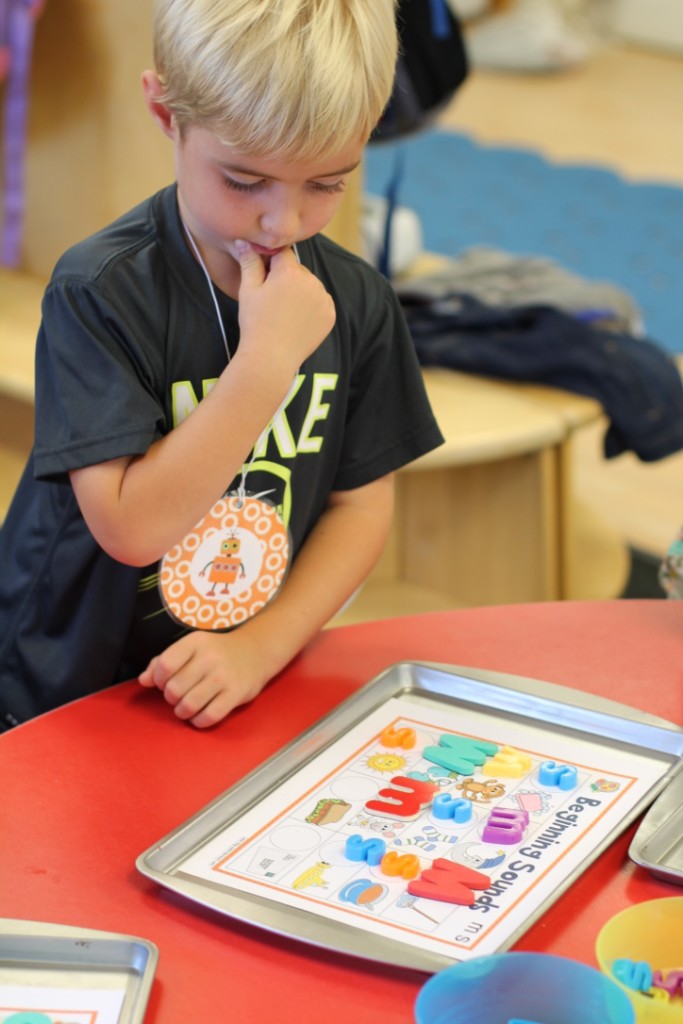
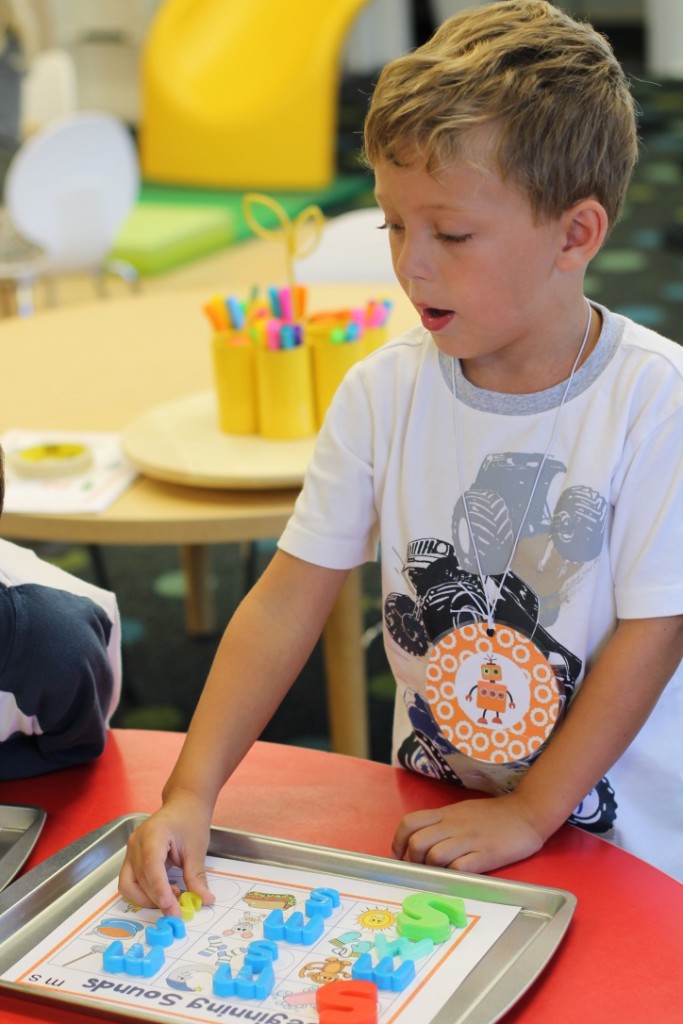
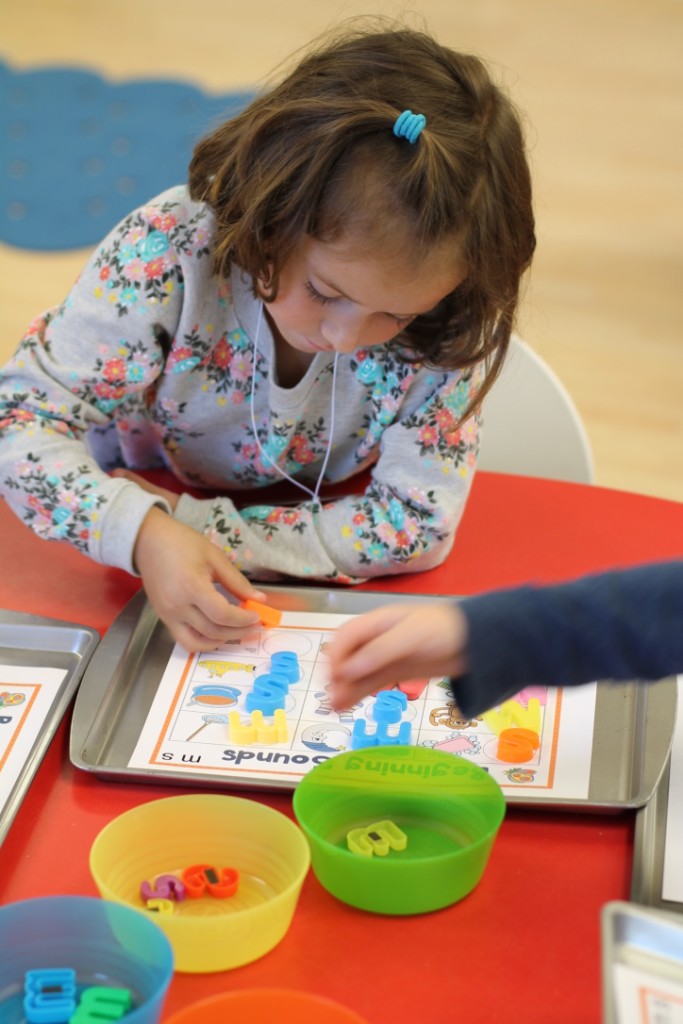
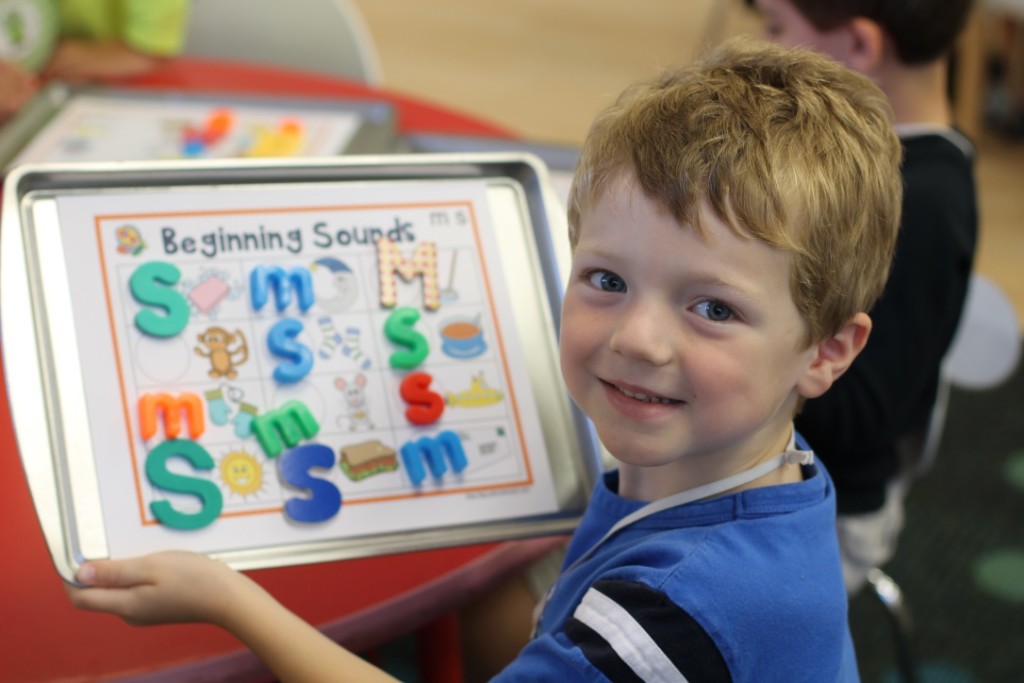
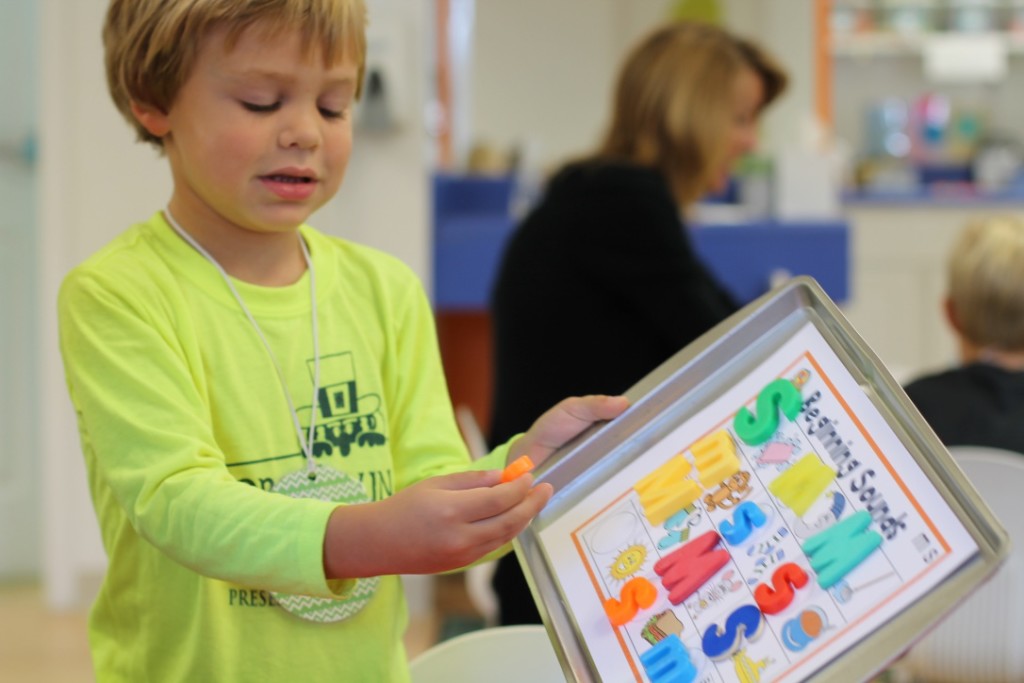
Young children learn in many different ways. One way they learn is through purposeful play and open ended activities. Open ended art experiences give them a chance to explore the world around them, ask questions, and see how things work. These art experiences allow them room to be themselves, make their own decisions, and just create. We used liquid watercolors, absorbent paper towels, eye droppers, and small paint brushes to create! The children loved watching their tiny drops spread and mix into a starburst as they hit the towels.
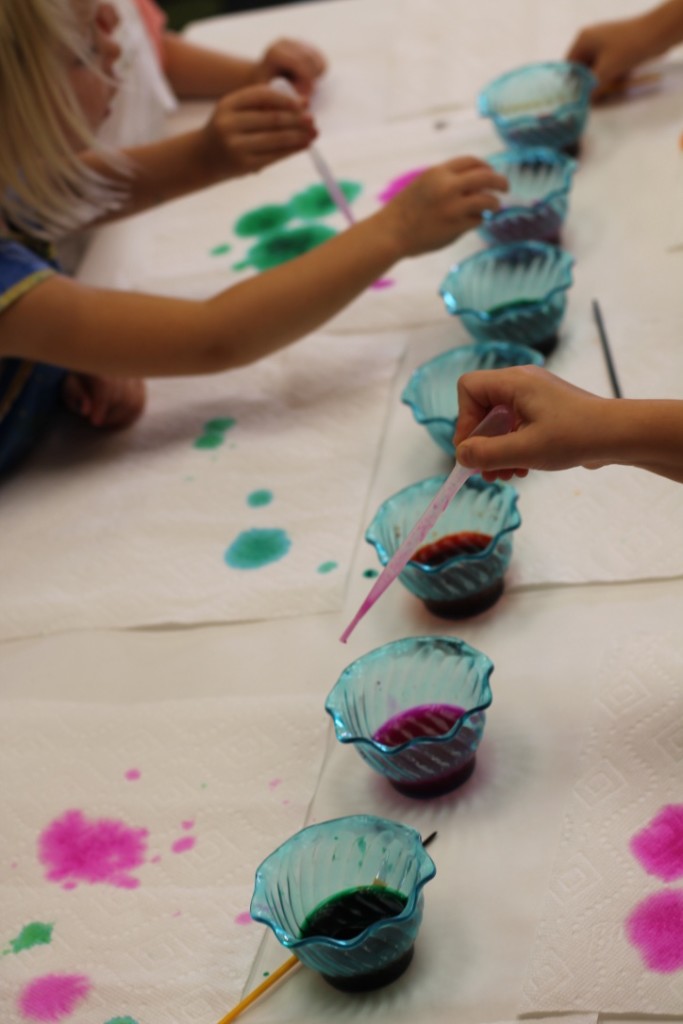
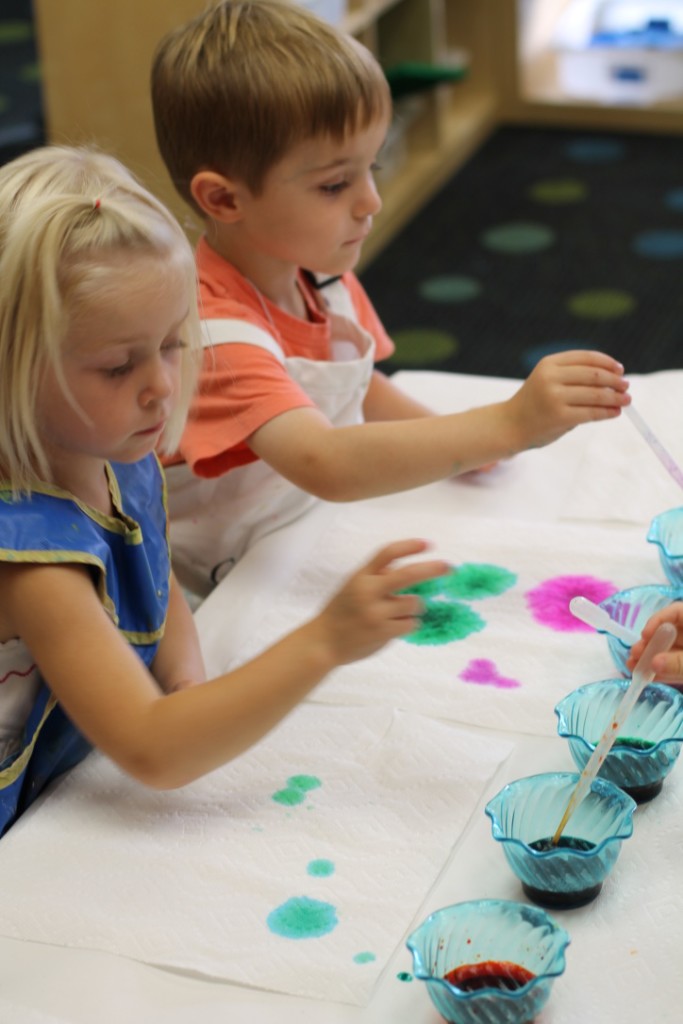
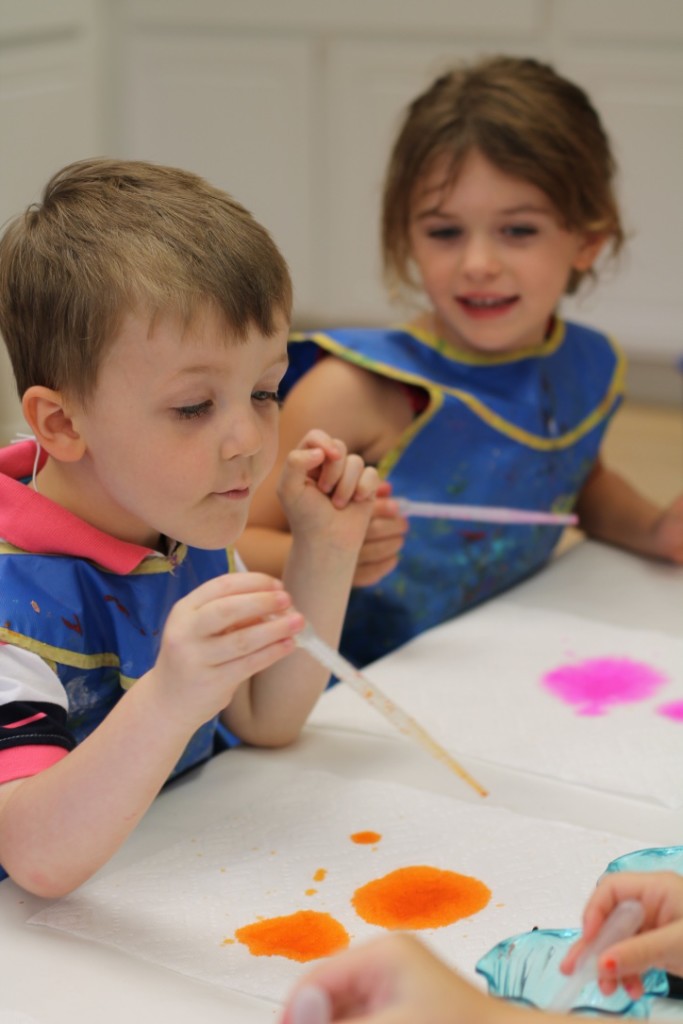
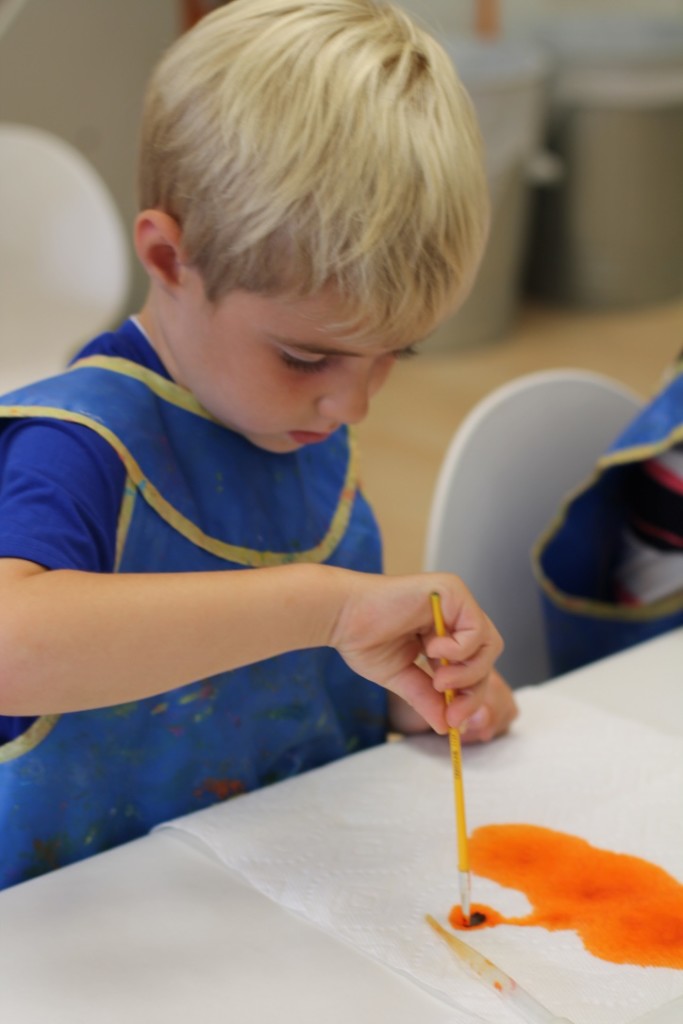
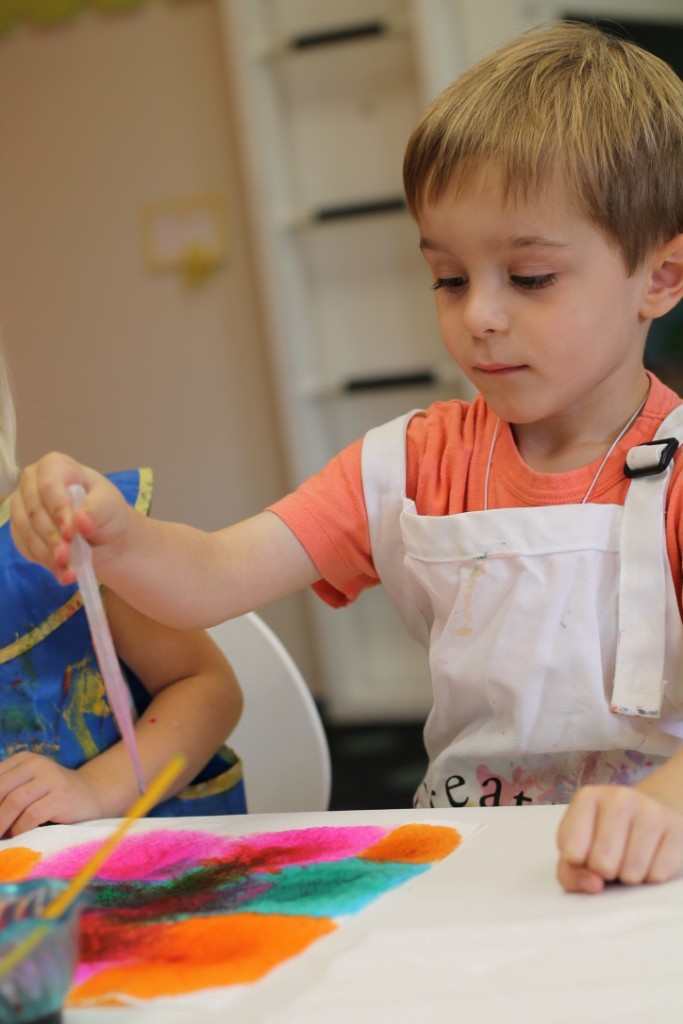
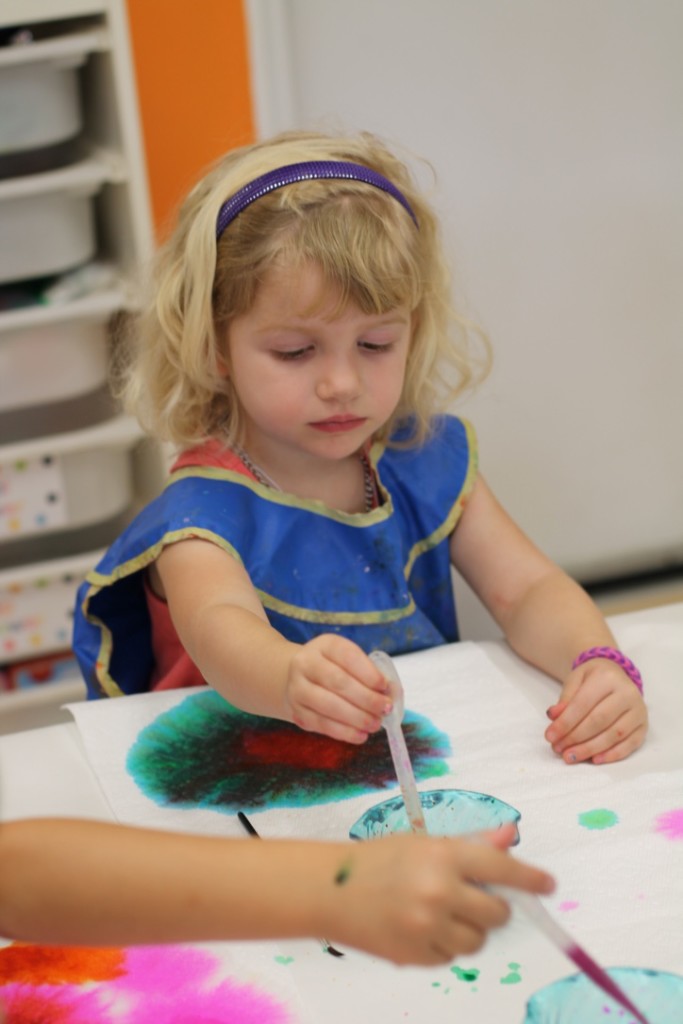
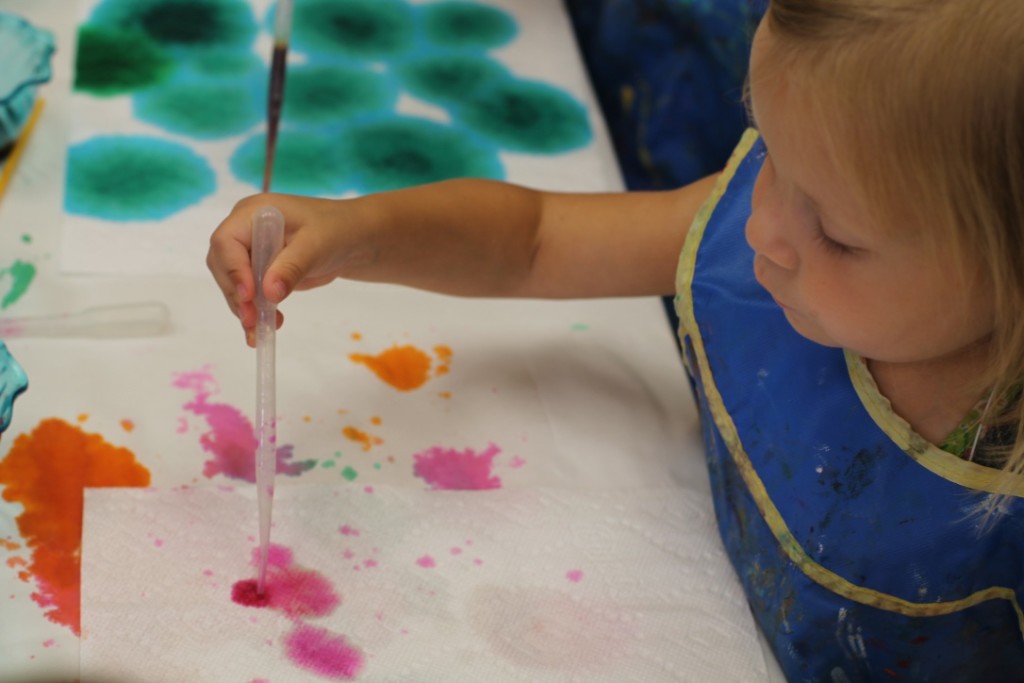
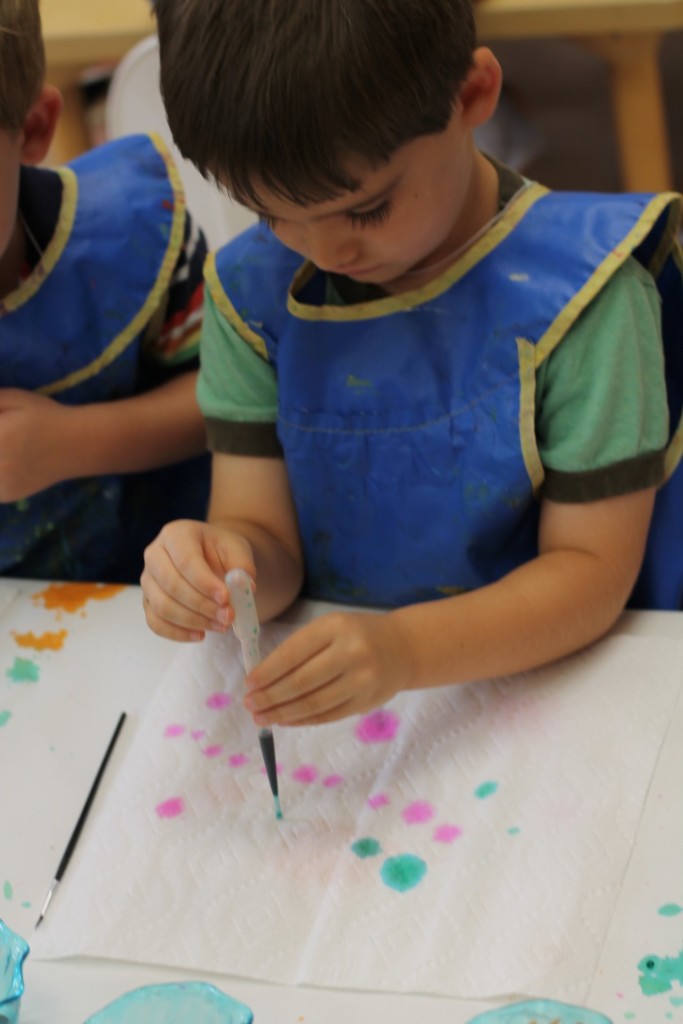
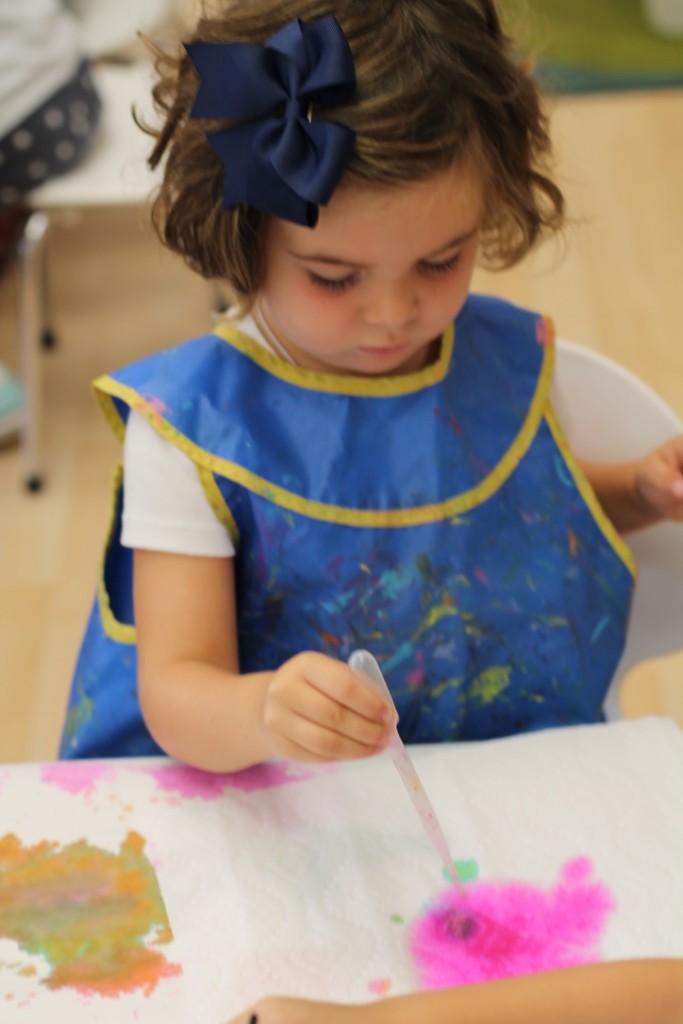
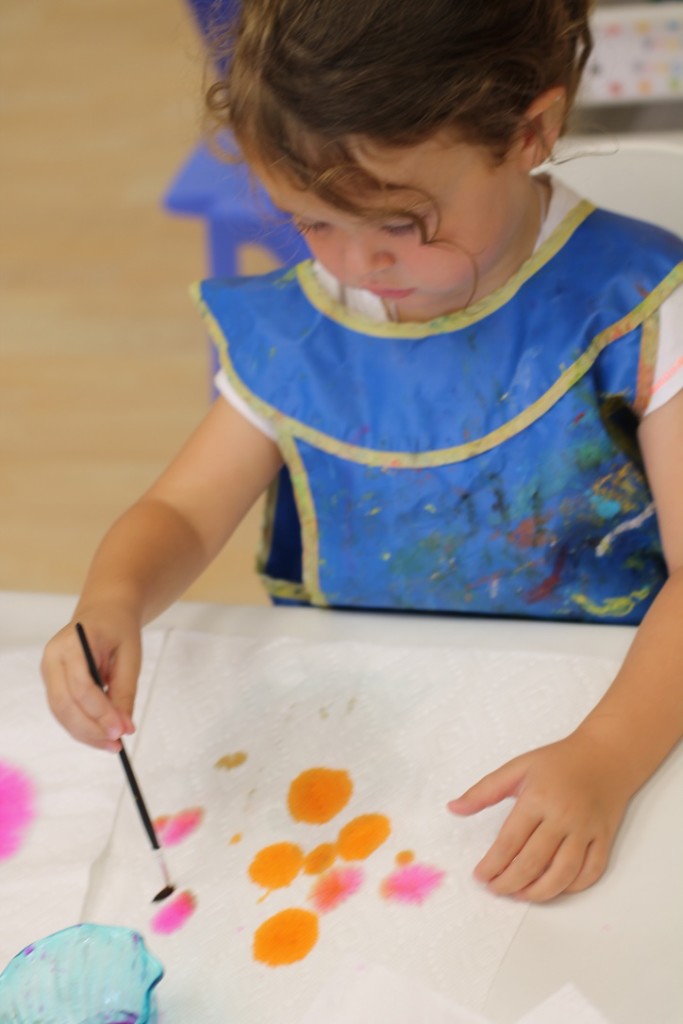
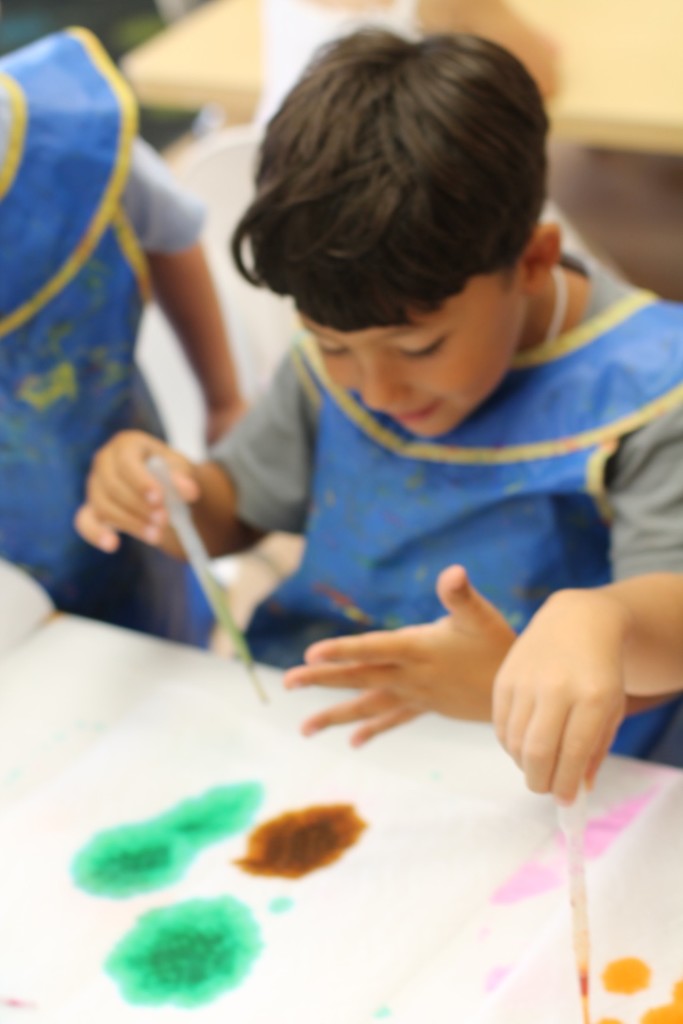
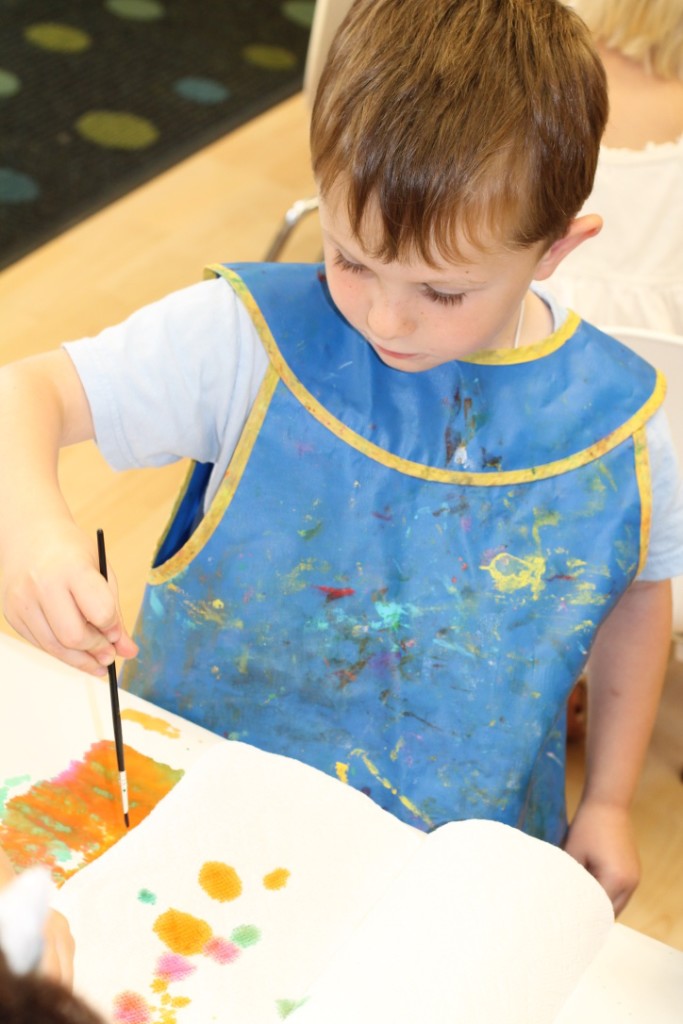
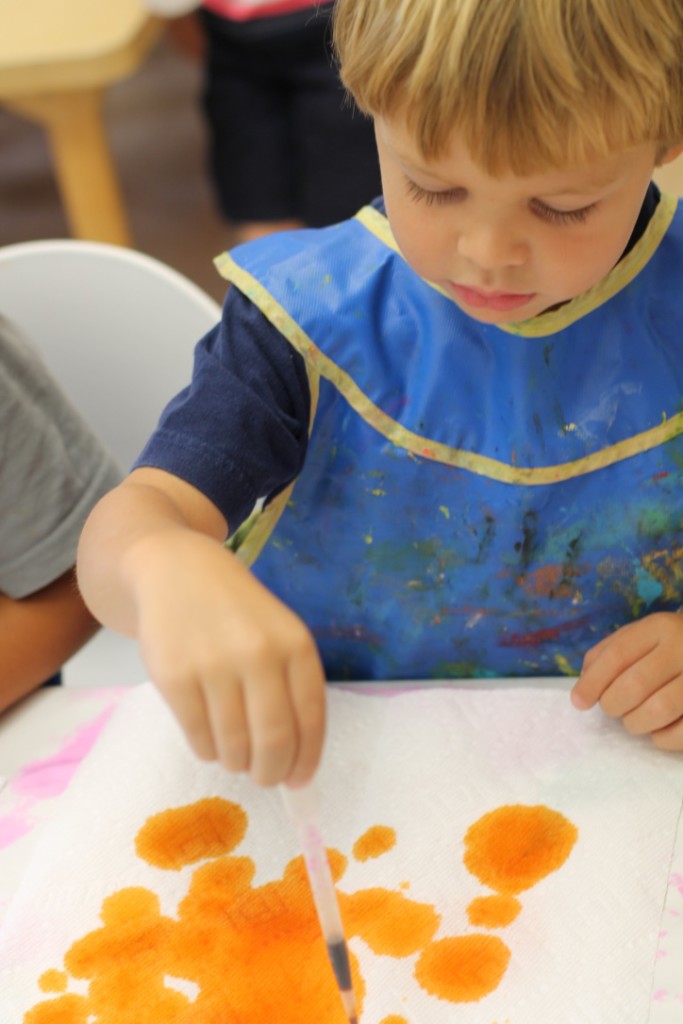
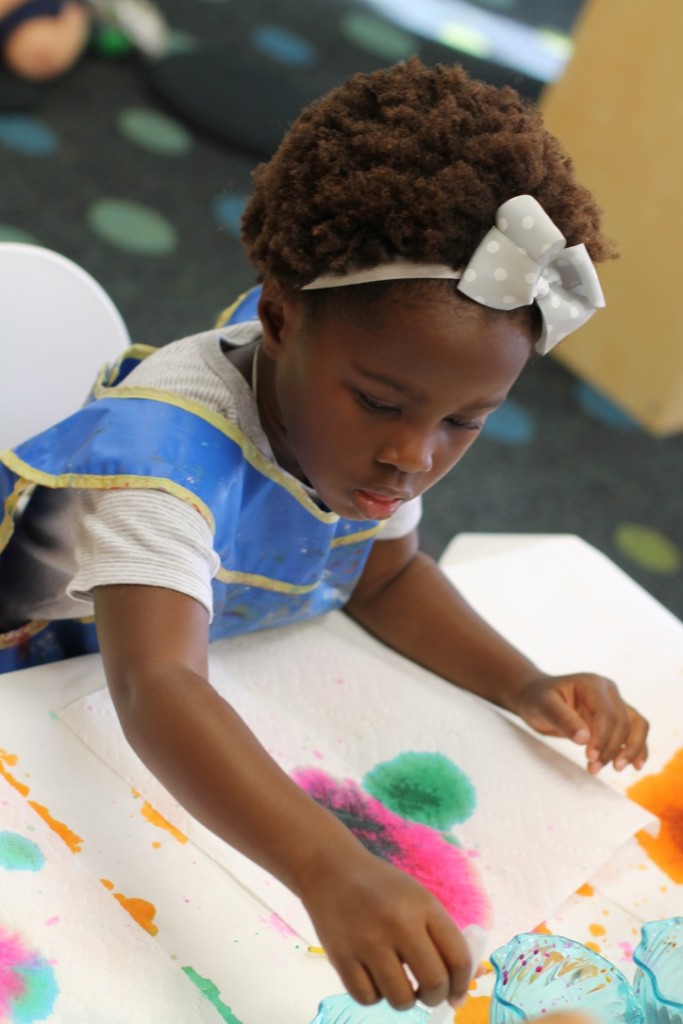
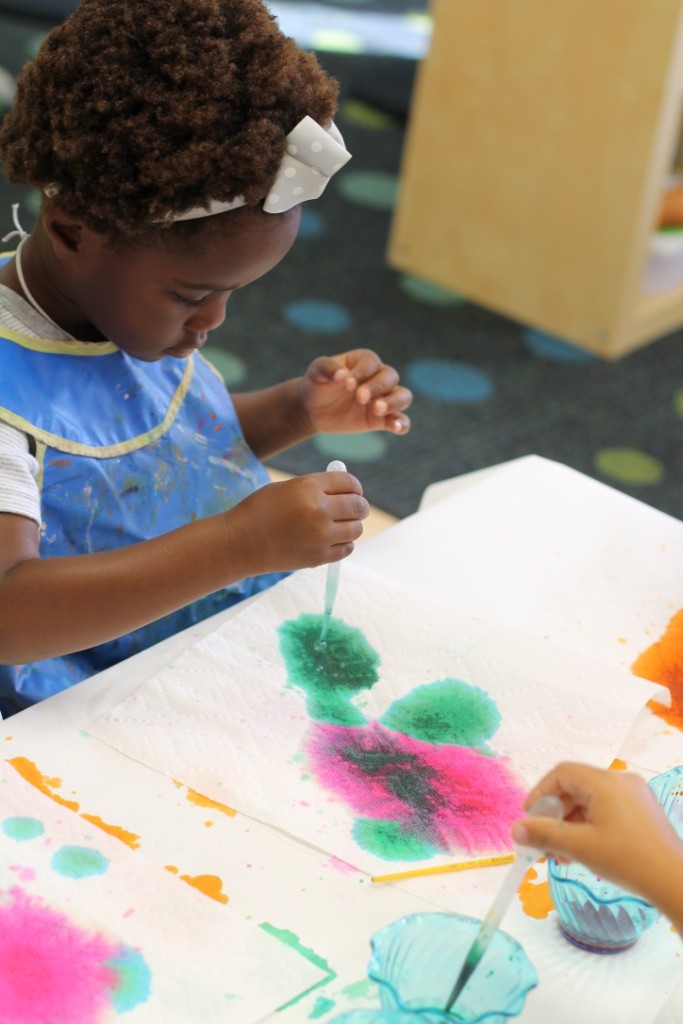
Young children function best when working in small groups due to the fact that their social and cognitive skills are still developing. The bulk of our day is devoted to small group activities to help children grow both socially and cognitively. When children work with only a few other children, in a small group setting, they learn important lessons about cooperation, compromise and the give and take of conversation. Also, when working in small groups with a teacher, children are able to receive the more focused attention they need for completing complex tasks and activities.
Young children have the desire to create. We see it in our own children every day! What we may not know is that art is a way for children to express their feelings and emotions. Open-ended art allows them to make independent choices on what materials to use, the outcome of the work, and individual expression rather than on the final product. Exploration and creative thinking are linked to meeting challenges throughout our life! So log off pinterest, grab the plain white paper, tubes of paint, brushes and let them lead the way.
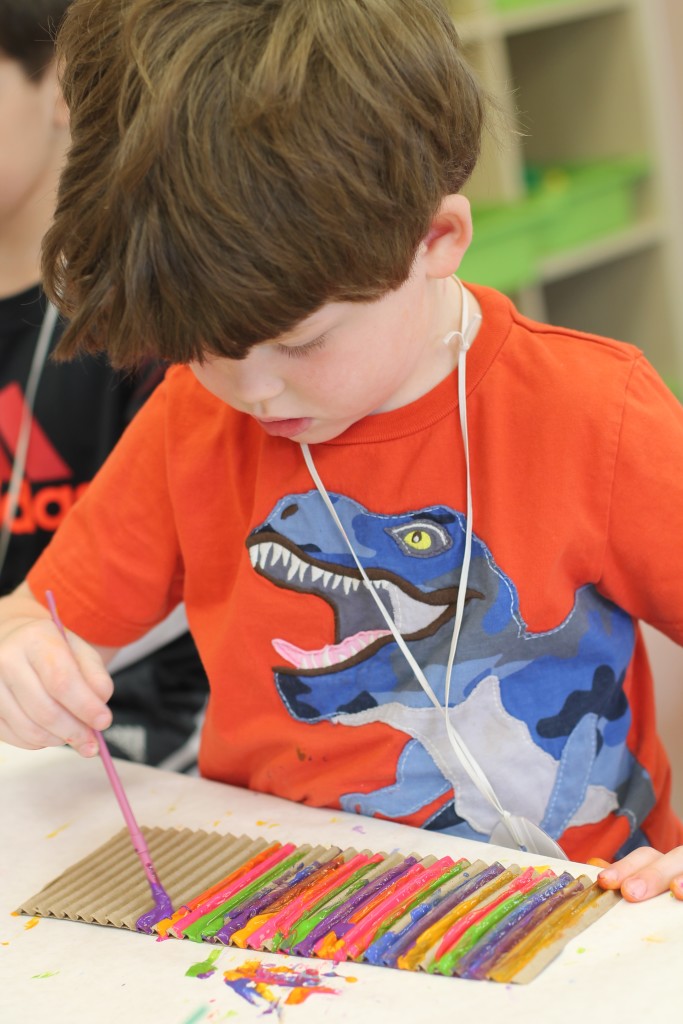
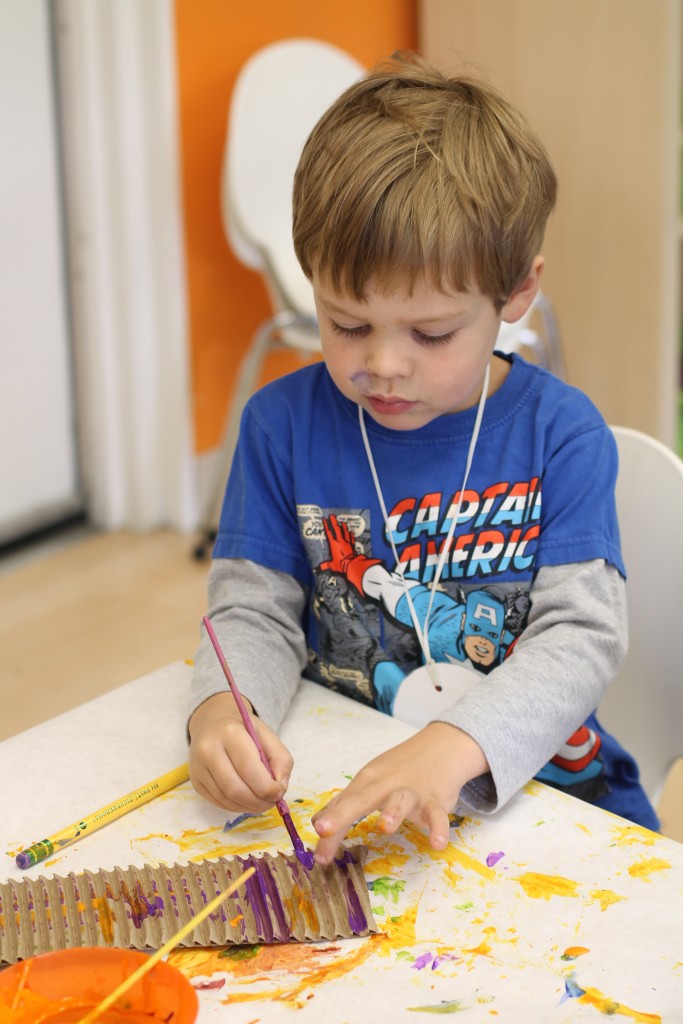
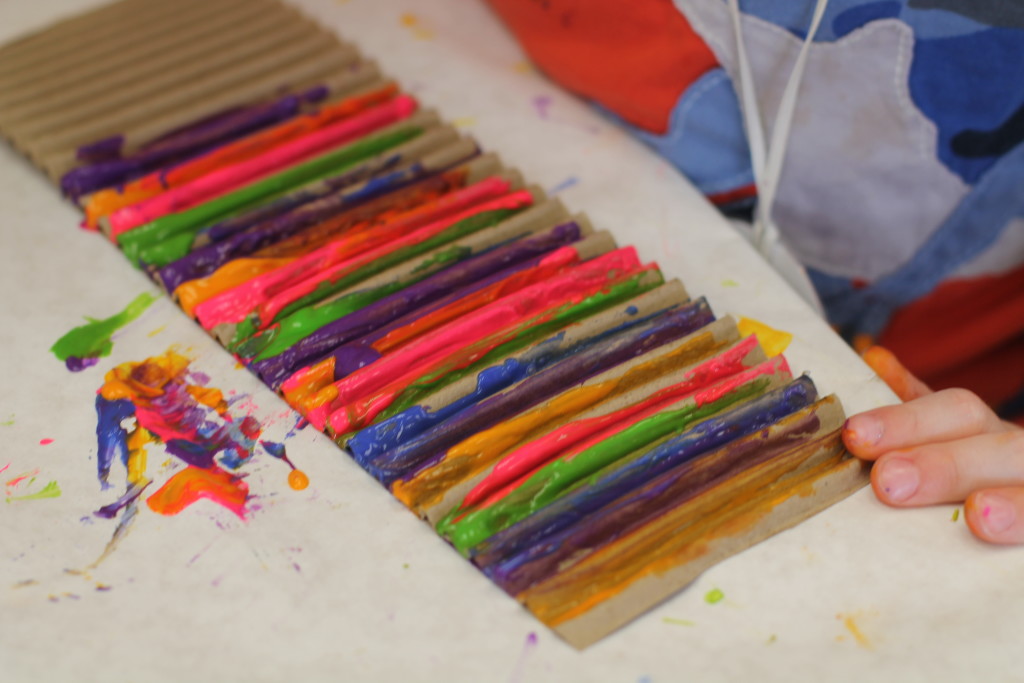
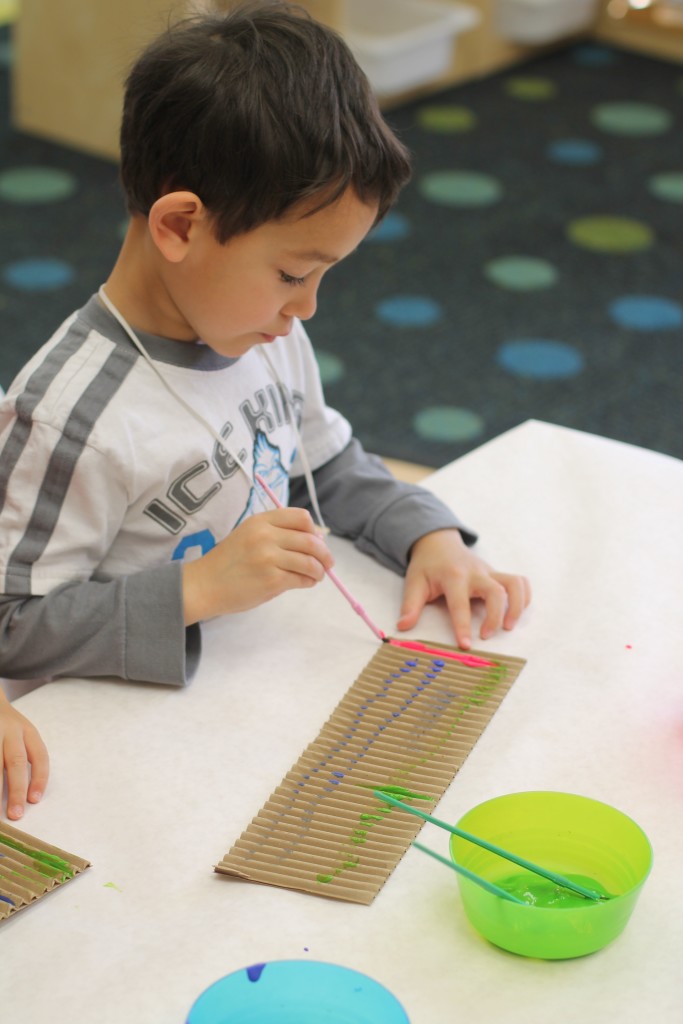
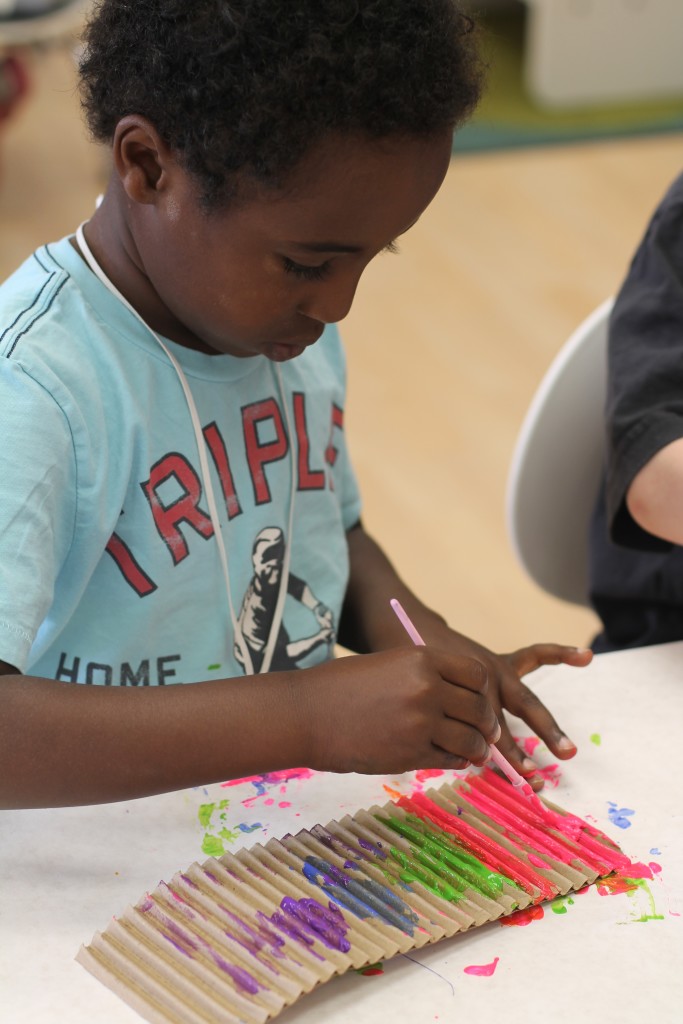
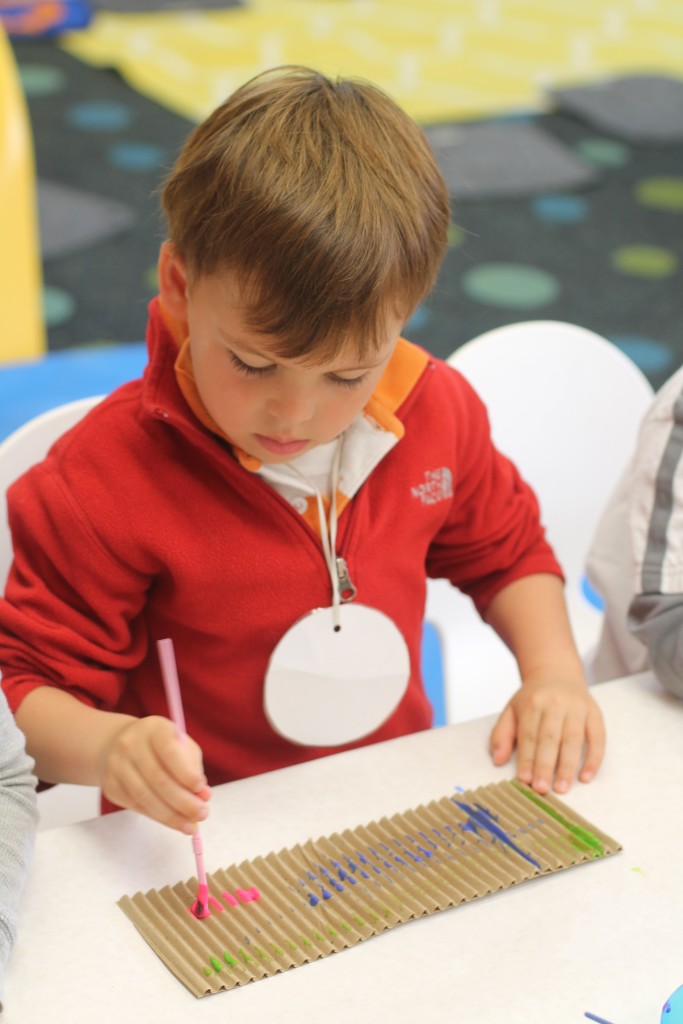
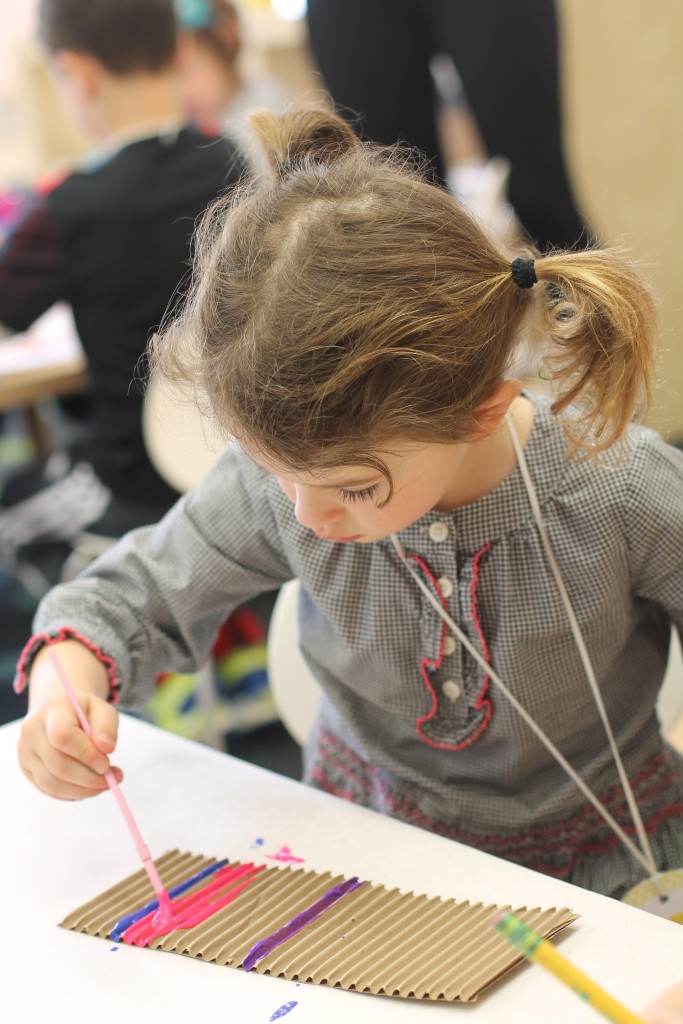
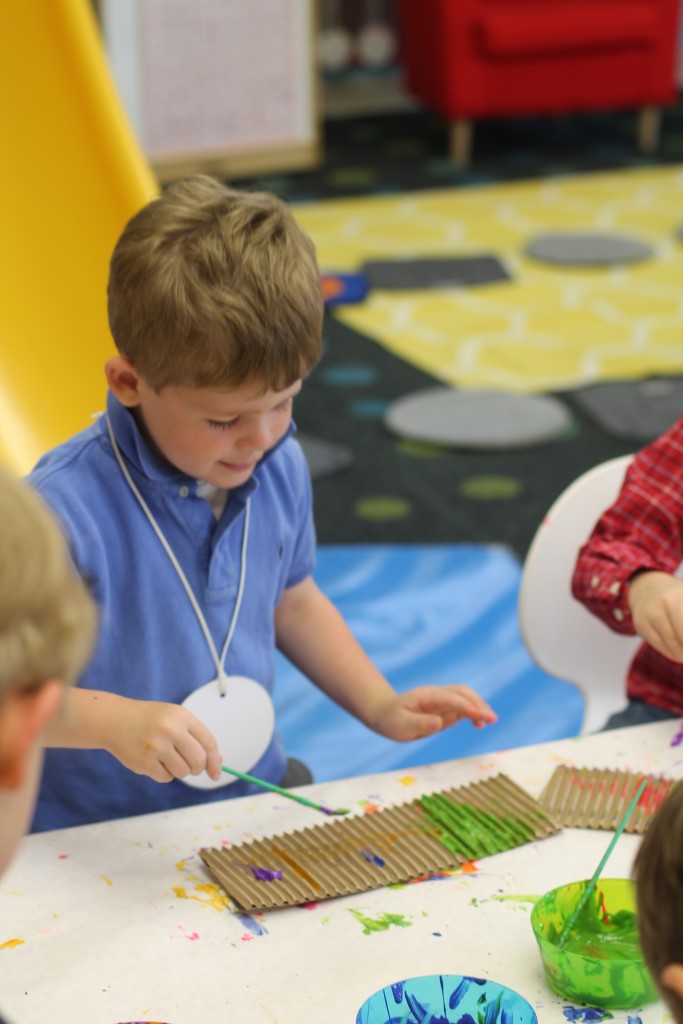
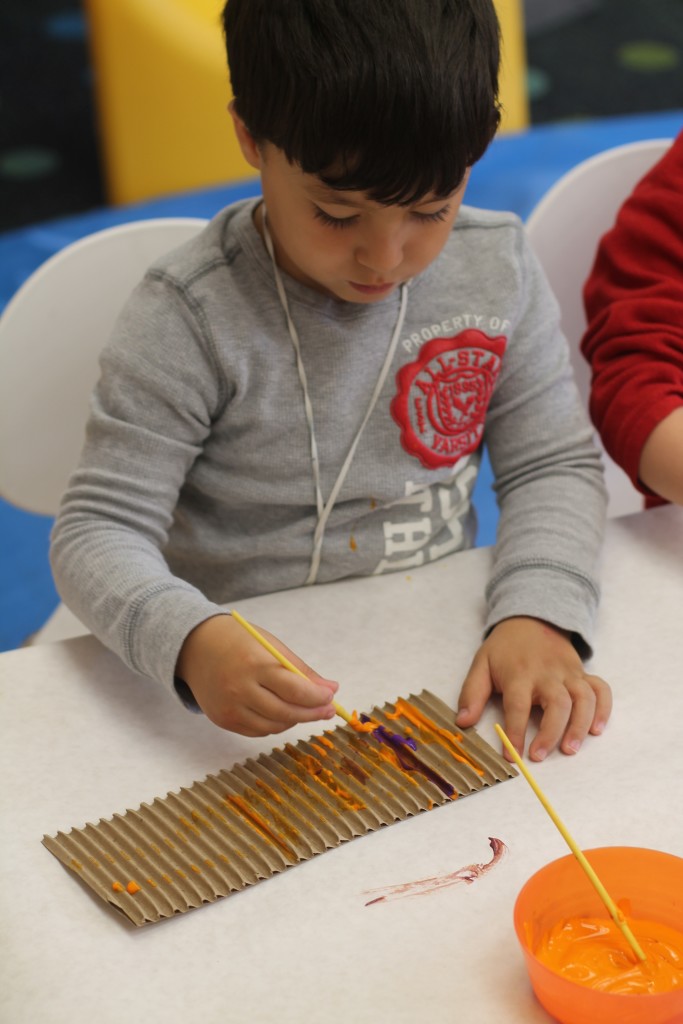
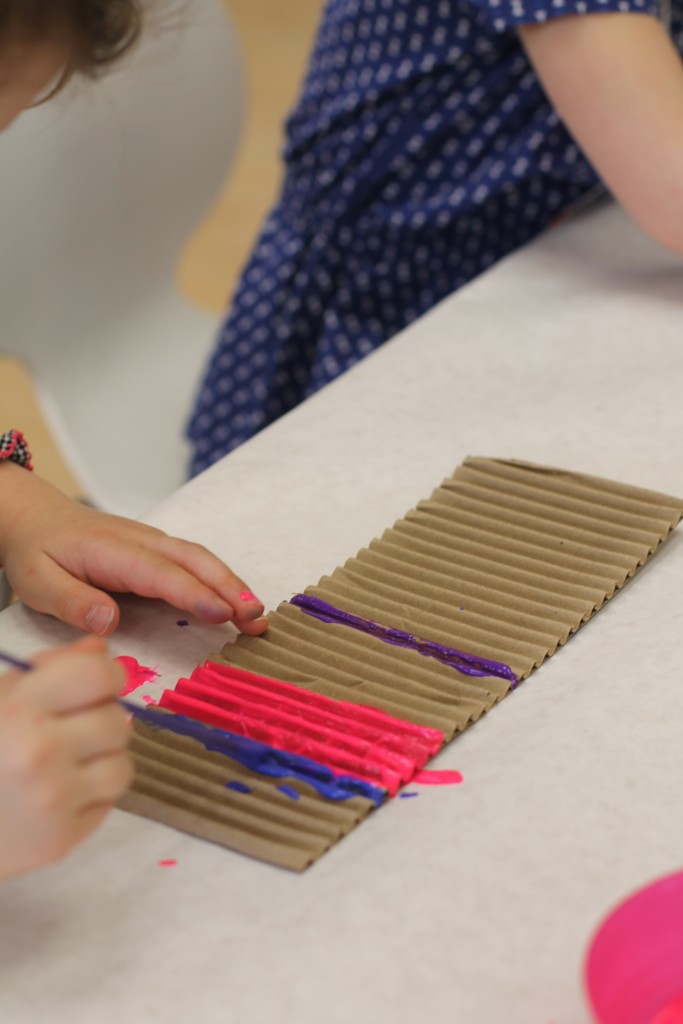
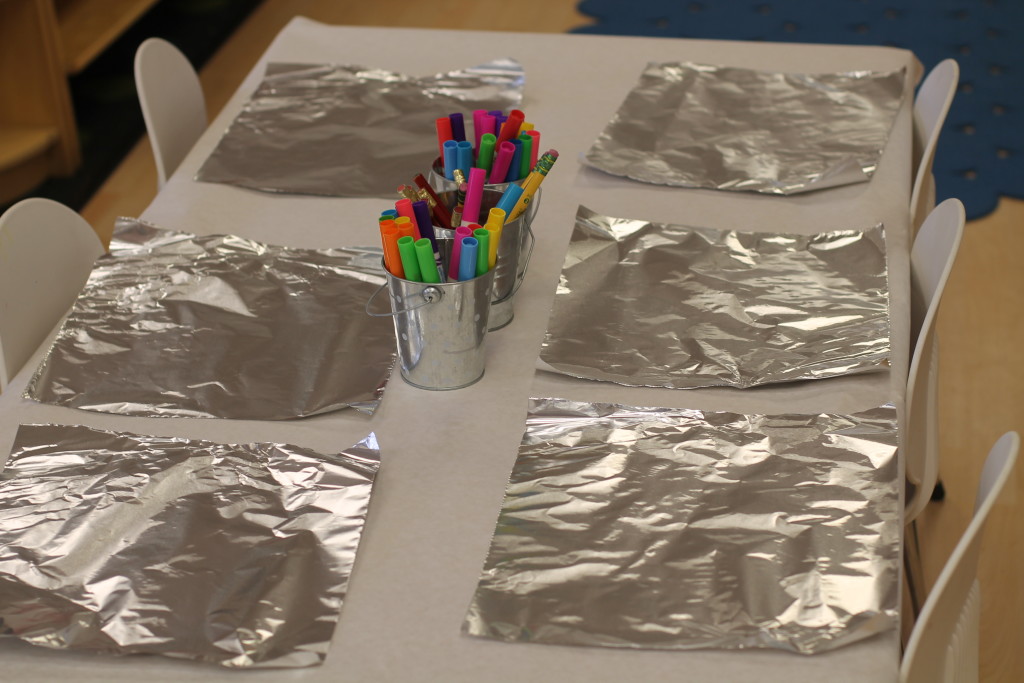
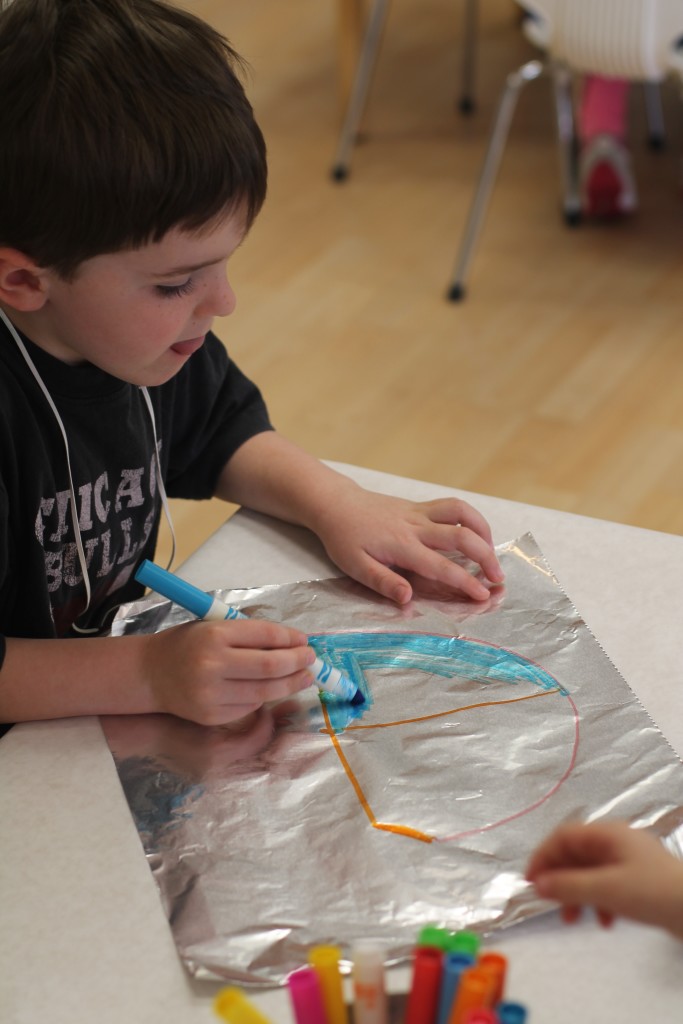
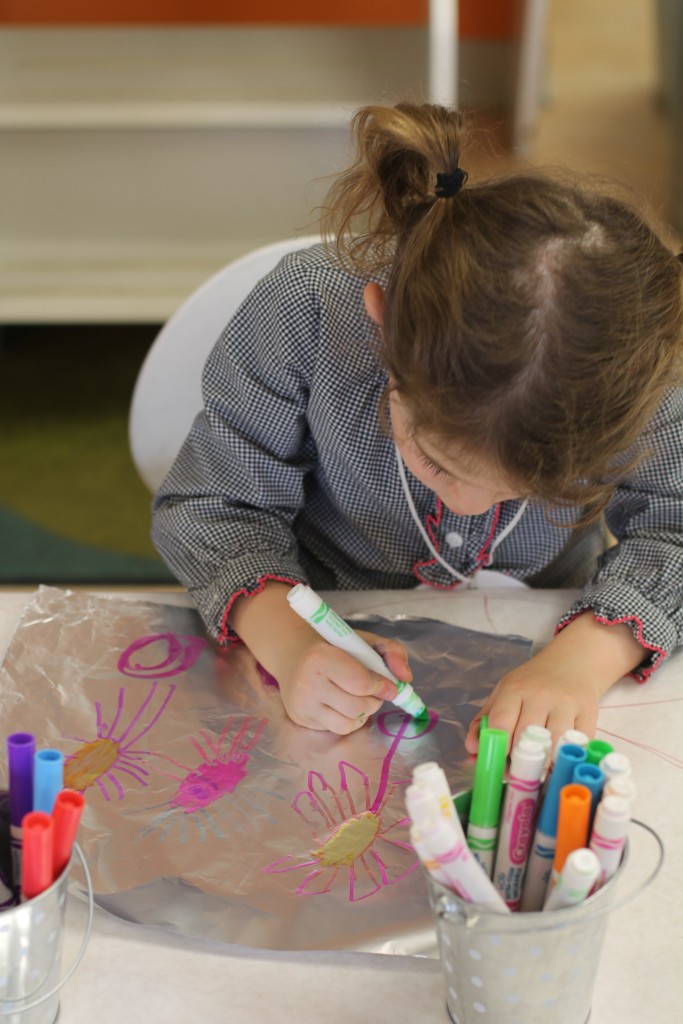
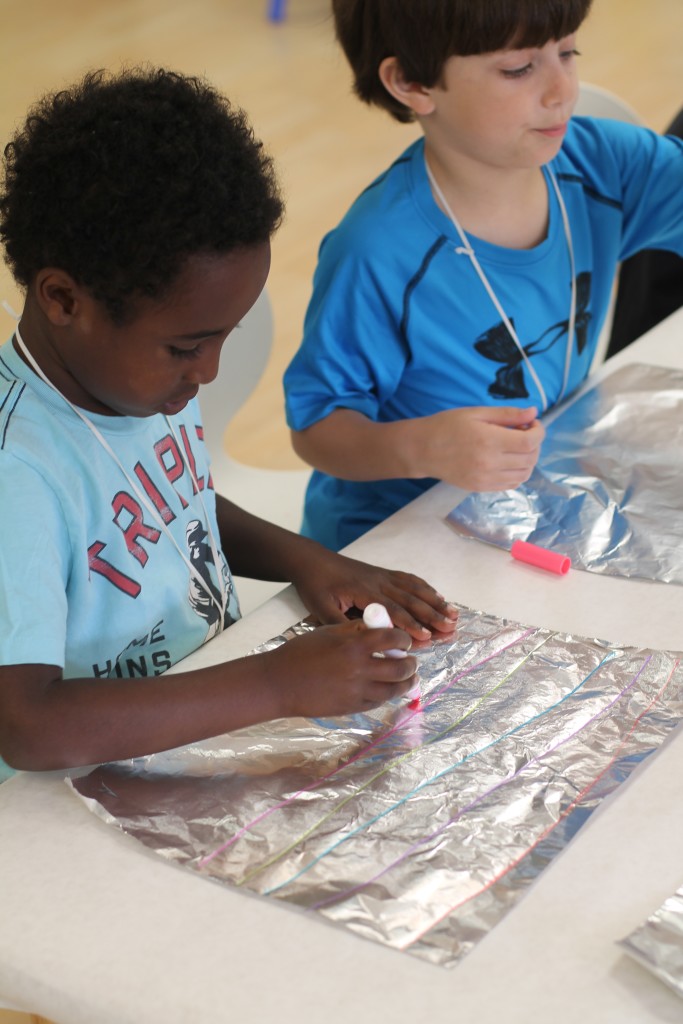
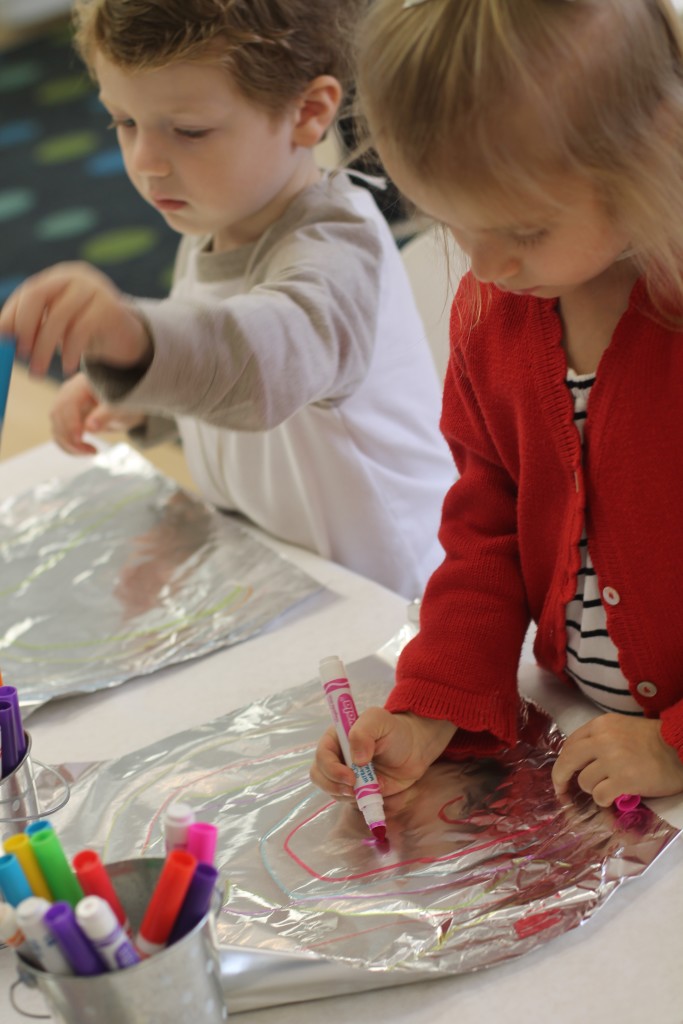
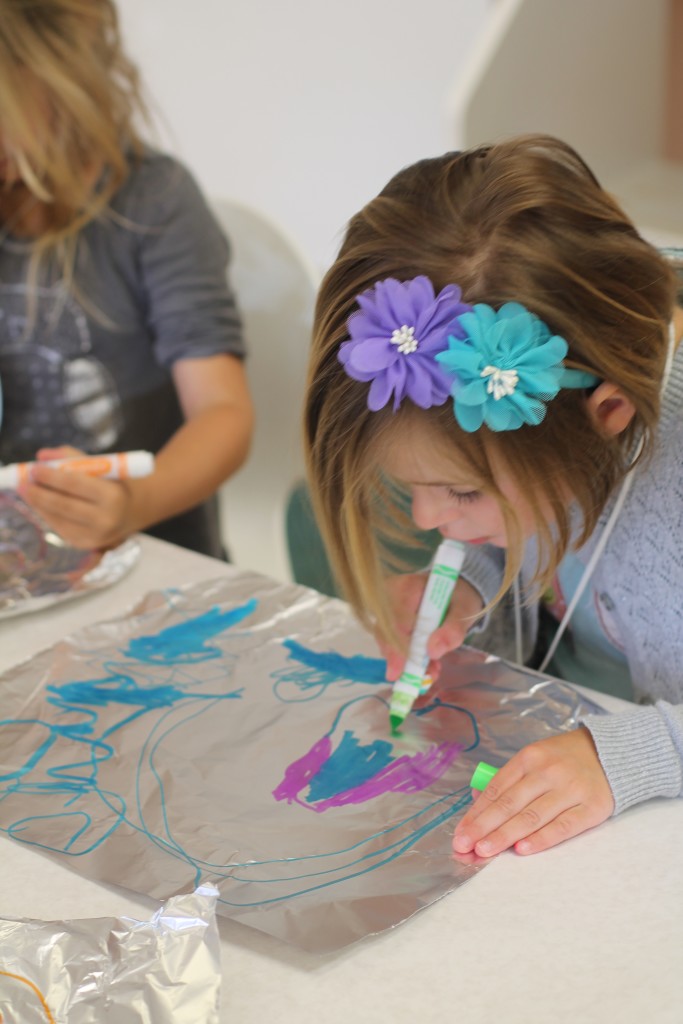
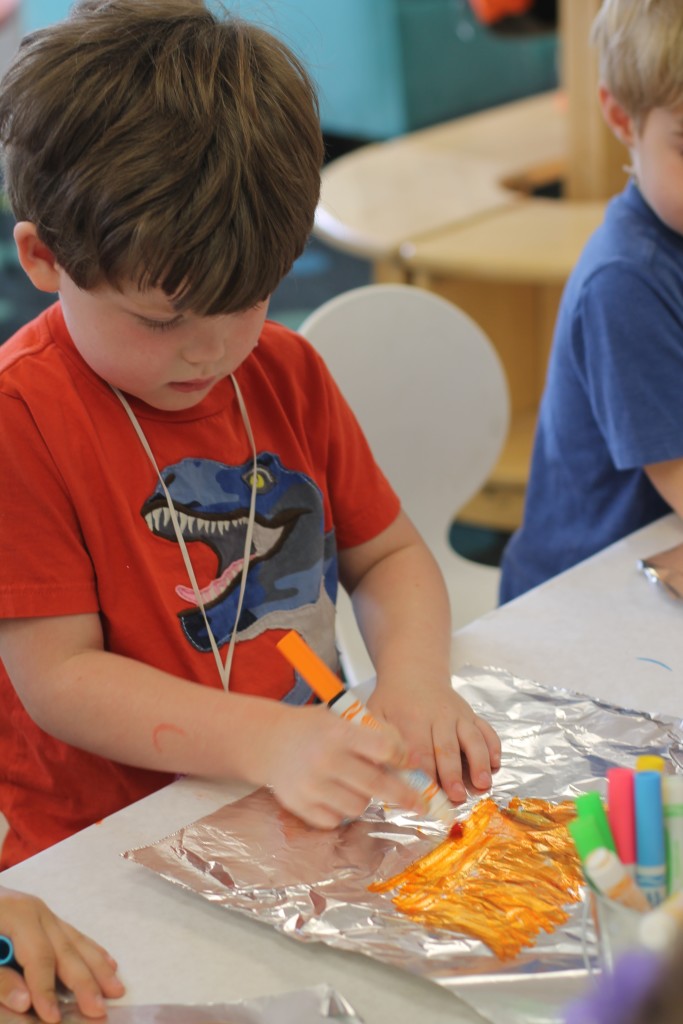
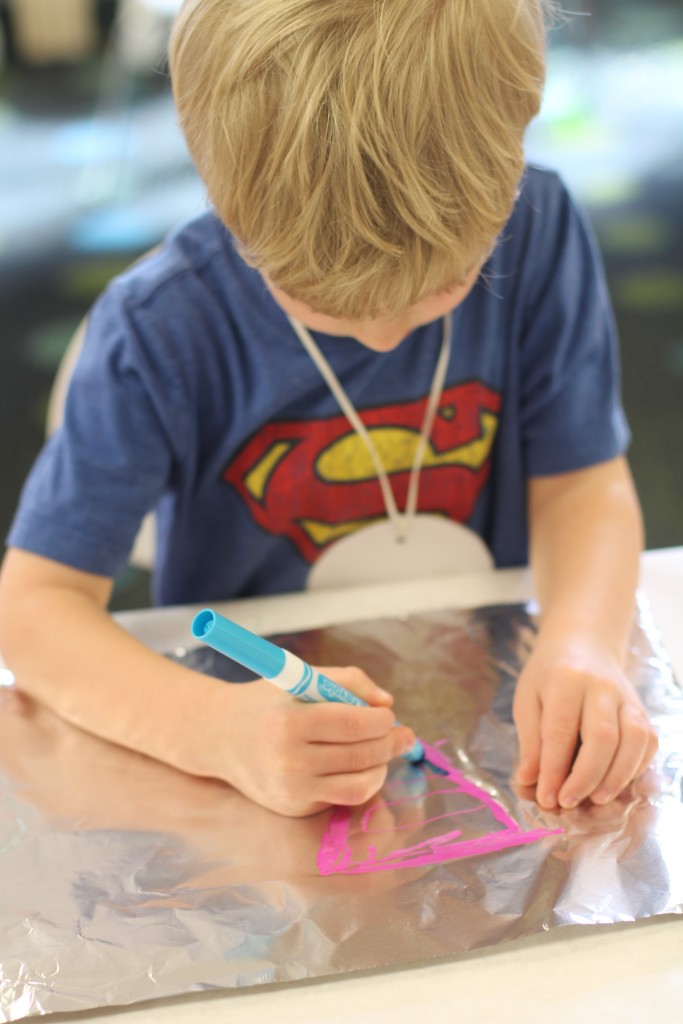

“It’s a treasure map and X marks the spot for the treasure!”

“See it in the middle? X marks the spot!”
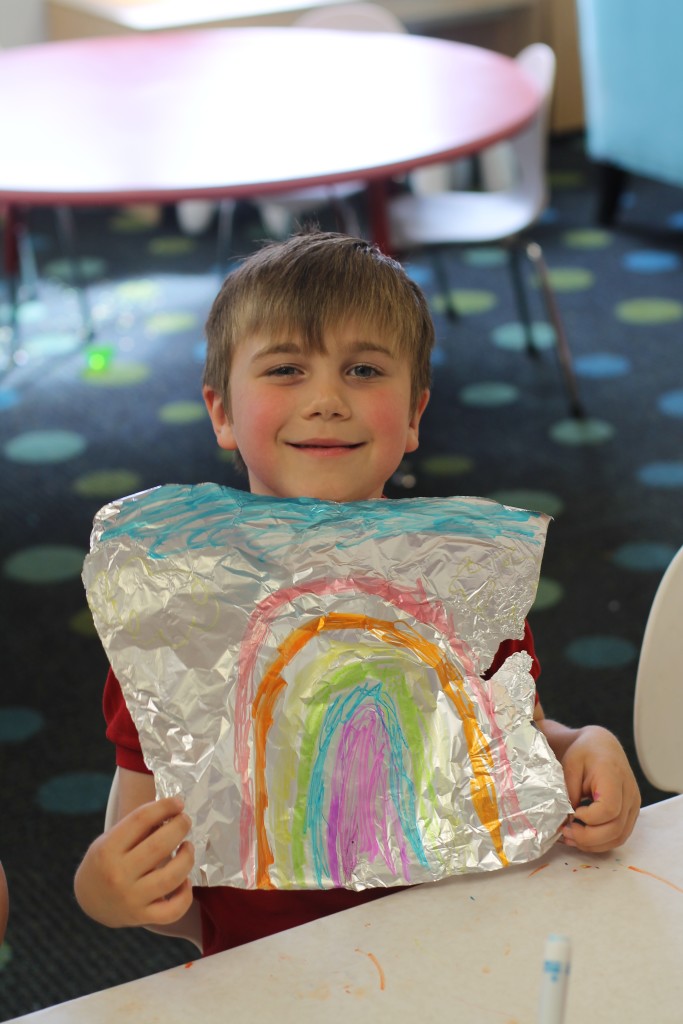
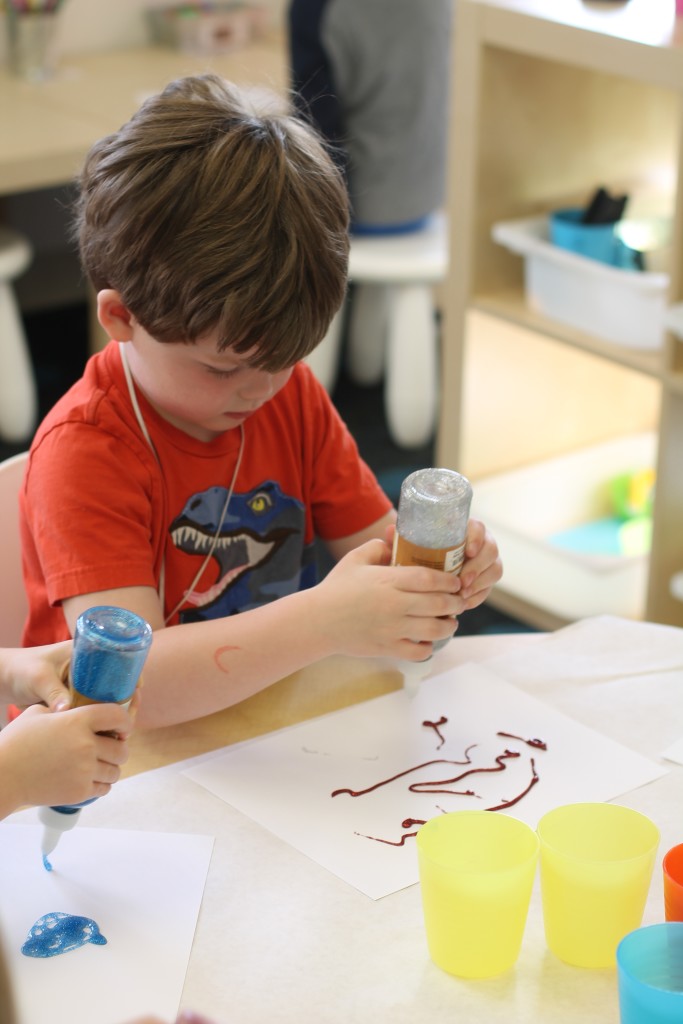
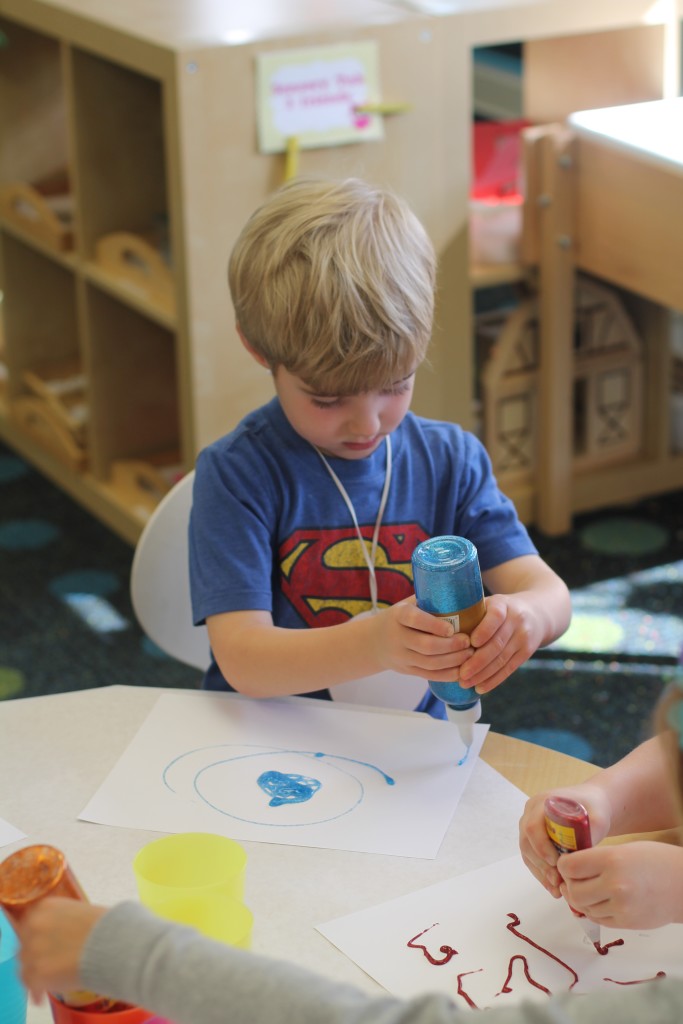
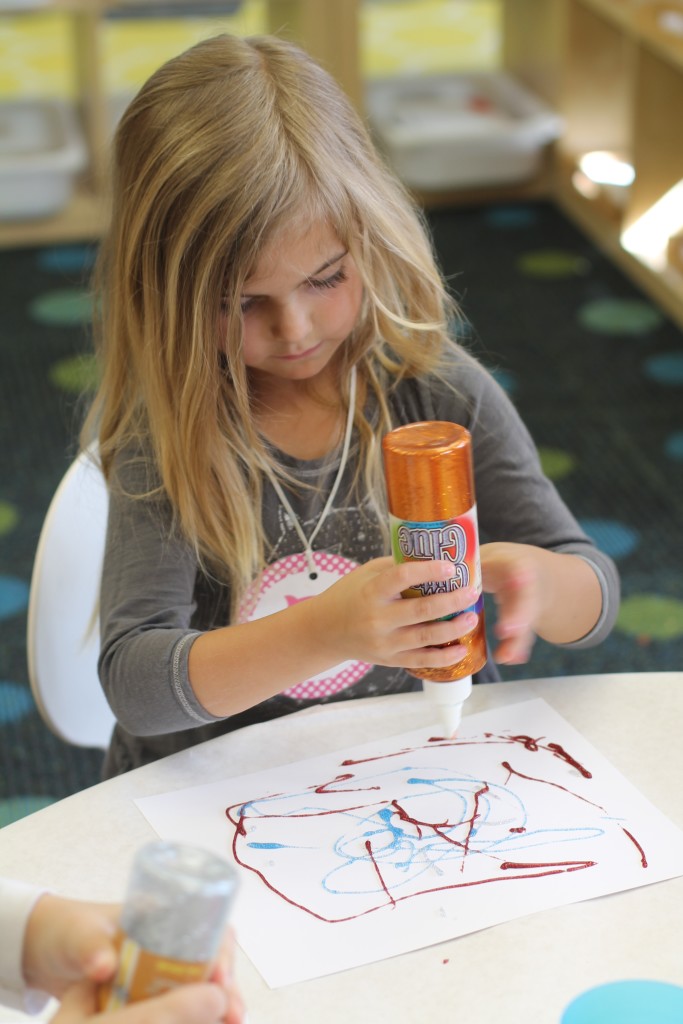
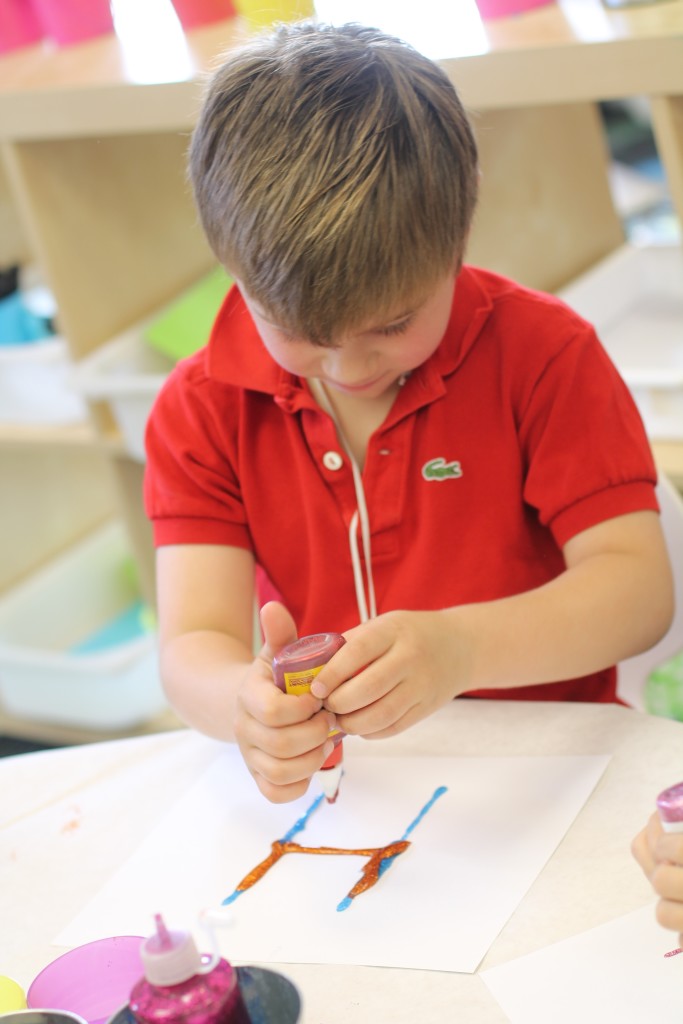
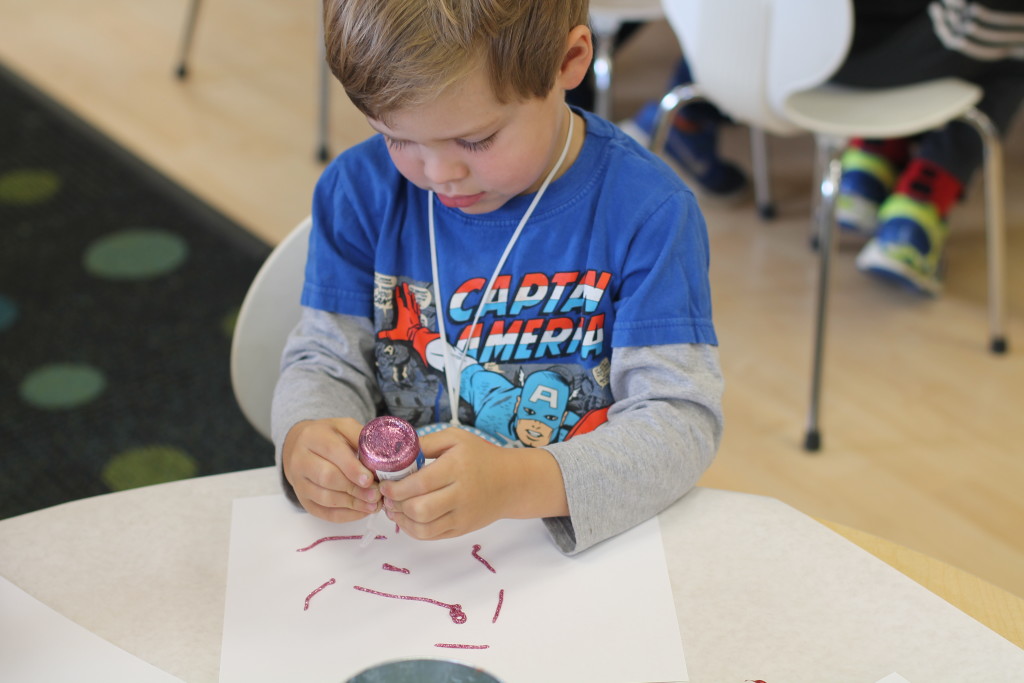
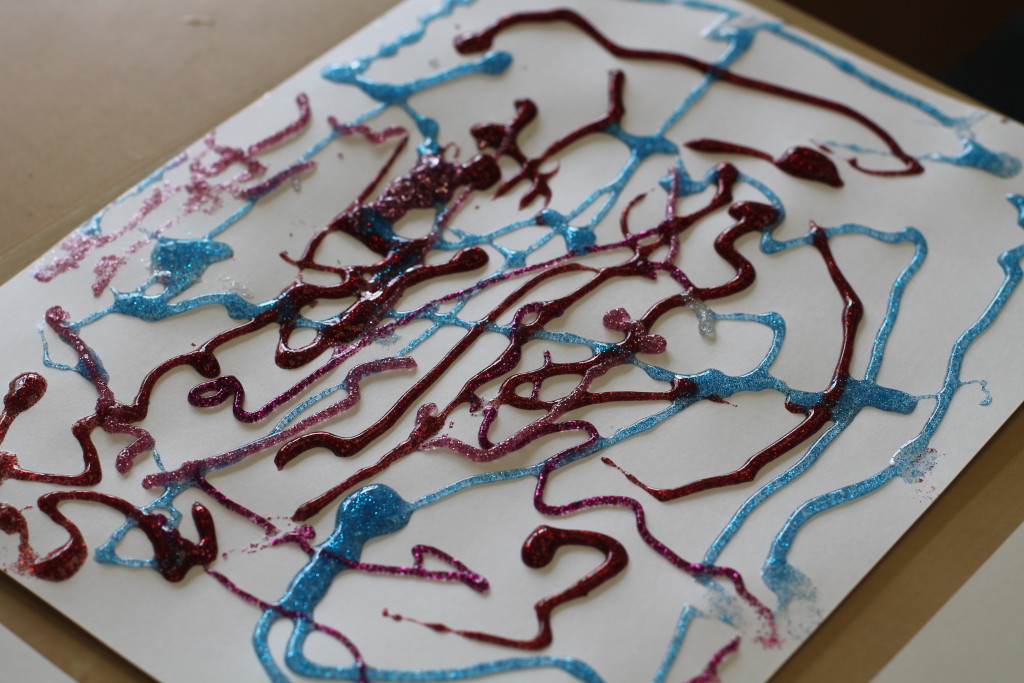
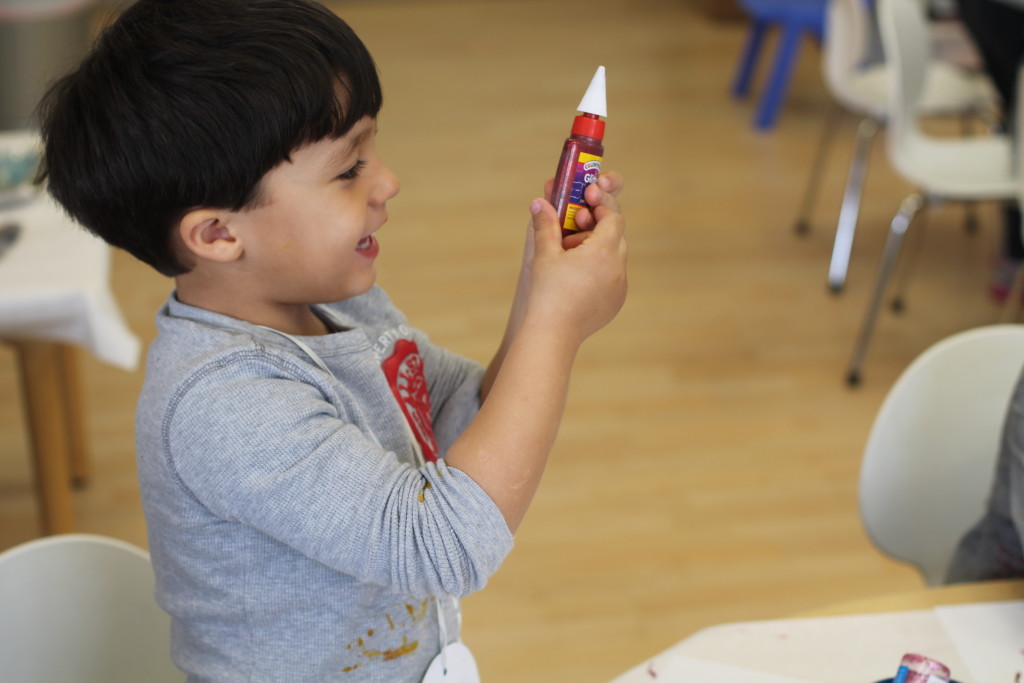
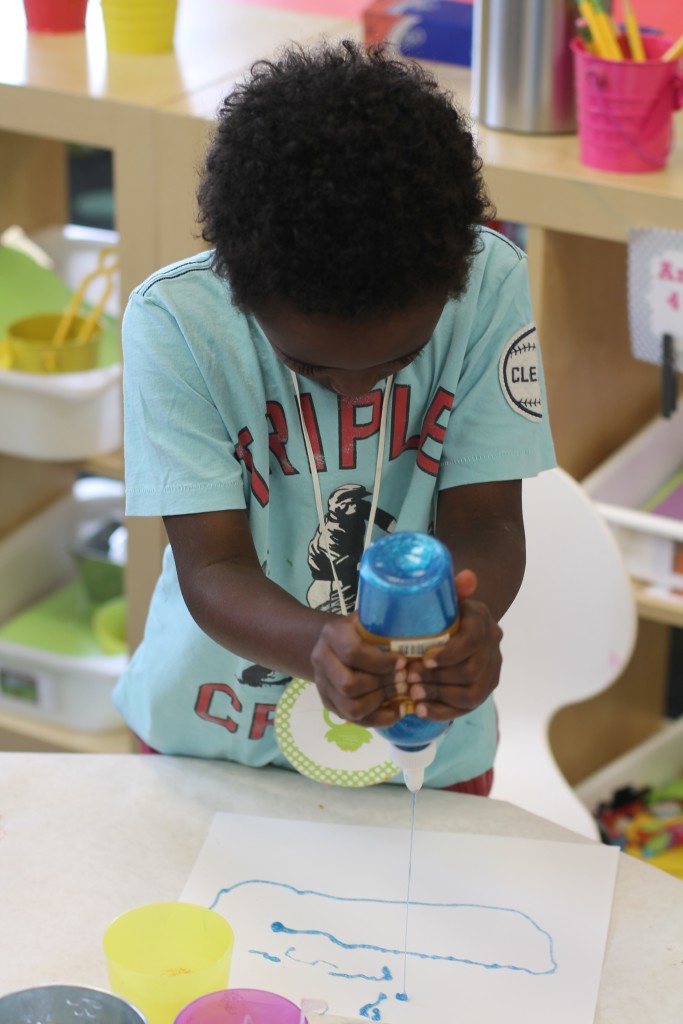
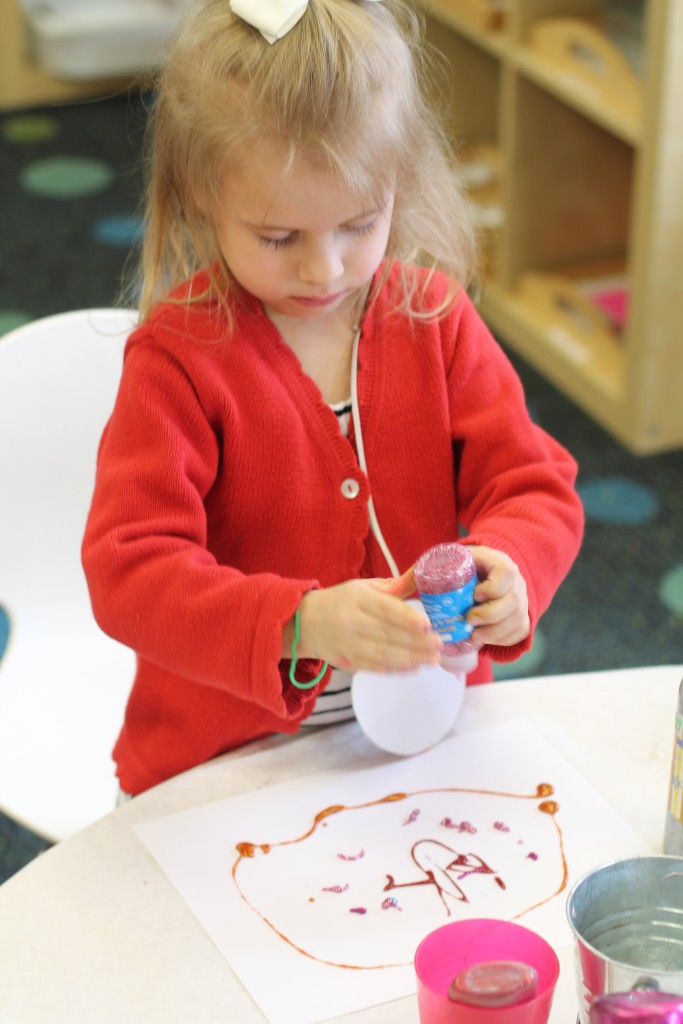
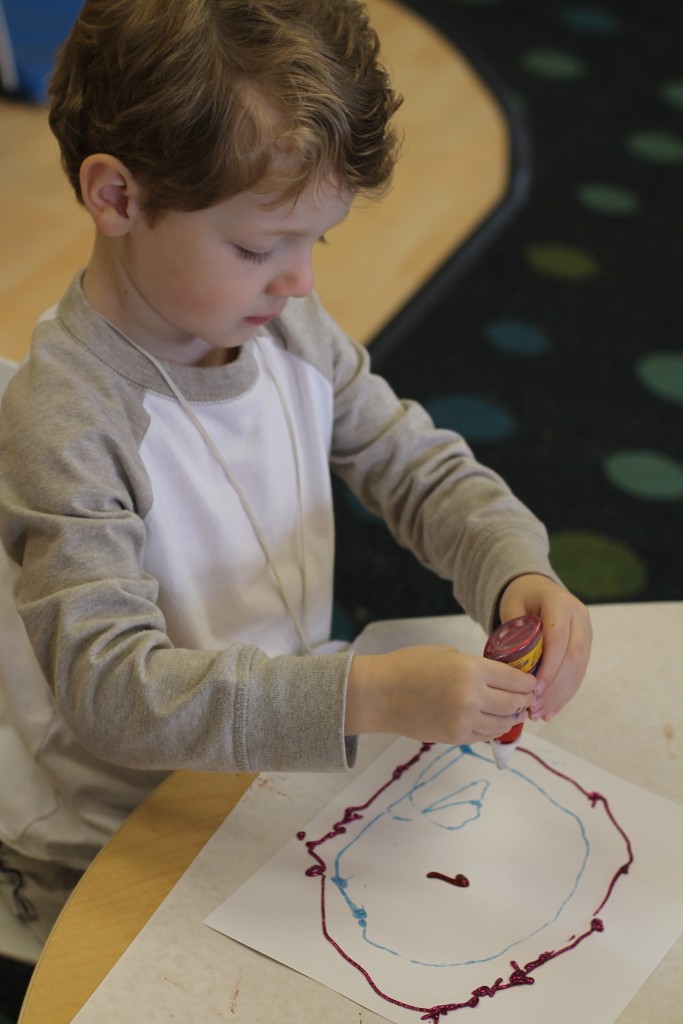
In this strategy, students read aloud to each other, pairing more fluent readers with less fluent readers. Children who read at the same level may be paired to reread a text that they have already read, for continued understanding and fluency work. In order to increase student fluency, readers need experience reading to and listening to other readers of all kinds. Specifically, lower-level readers benefit from strategies such as Paired Reading by listening to the reading of a higher-level reader. Reading with someone else encourages students to try reading material that may be above their usual reading level, while also building oral skills so that students are more comfortable with their reading.
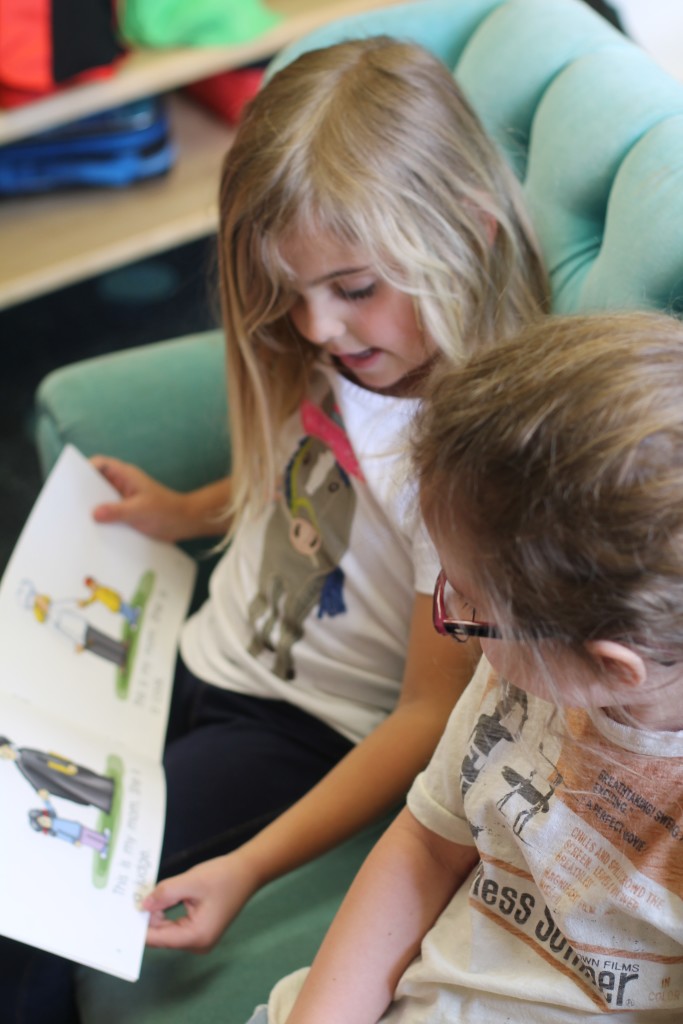
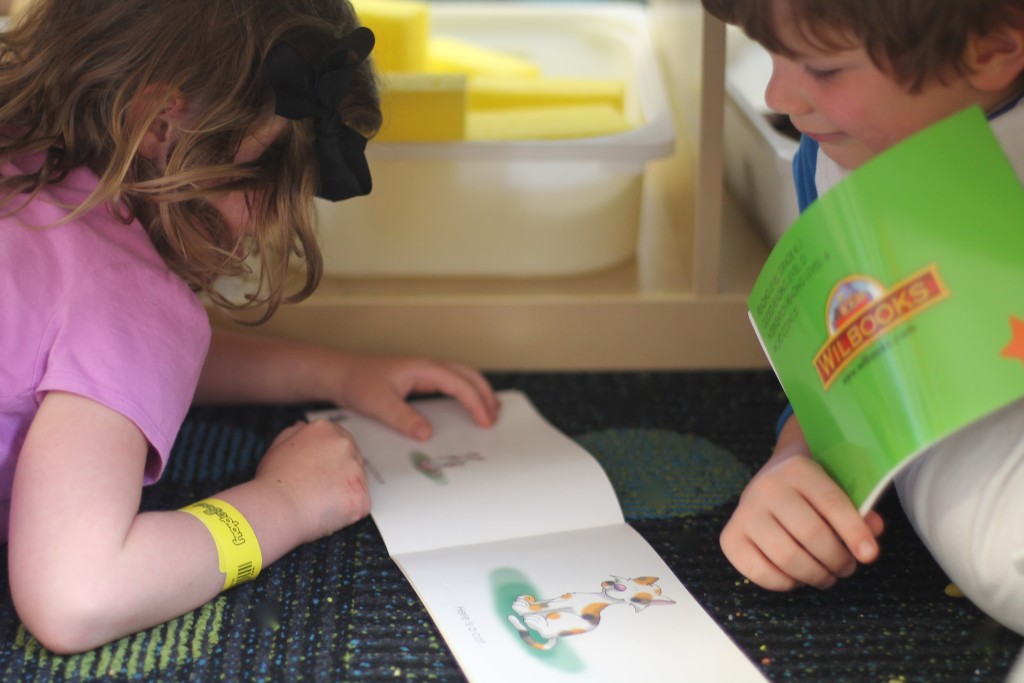
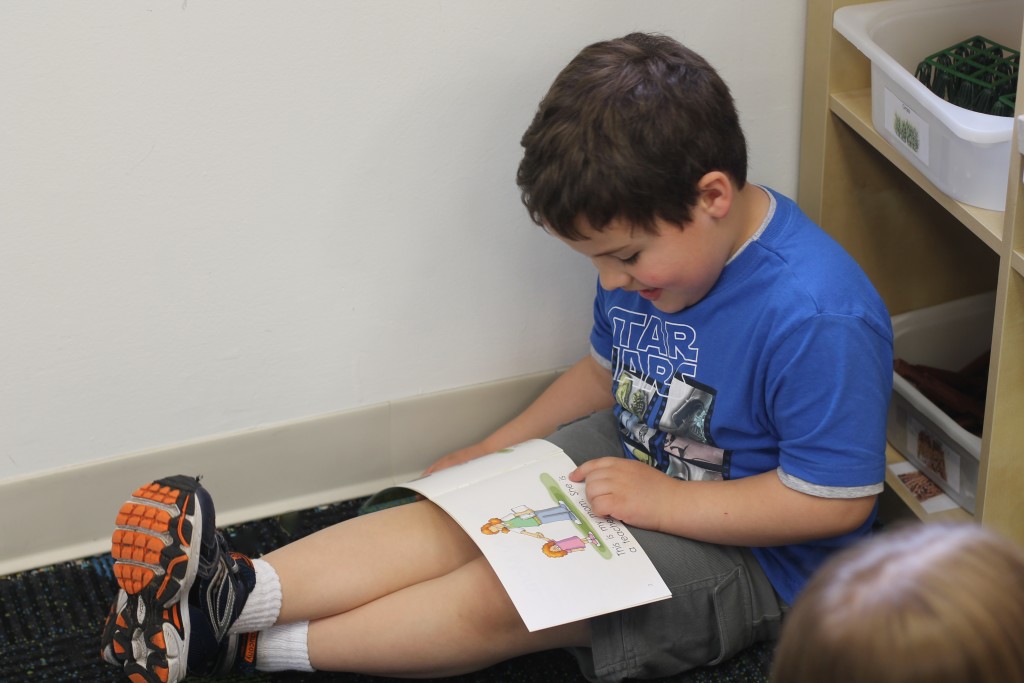
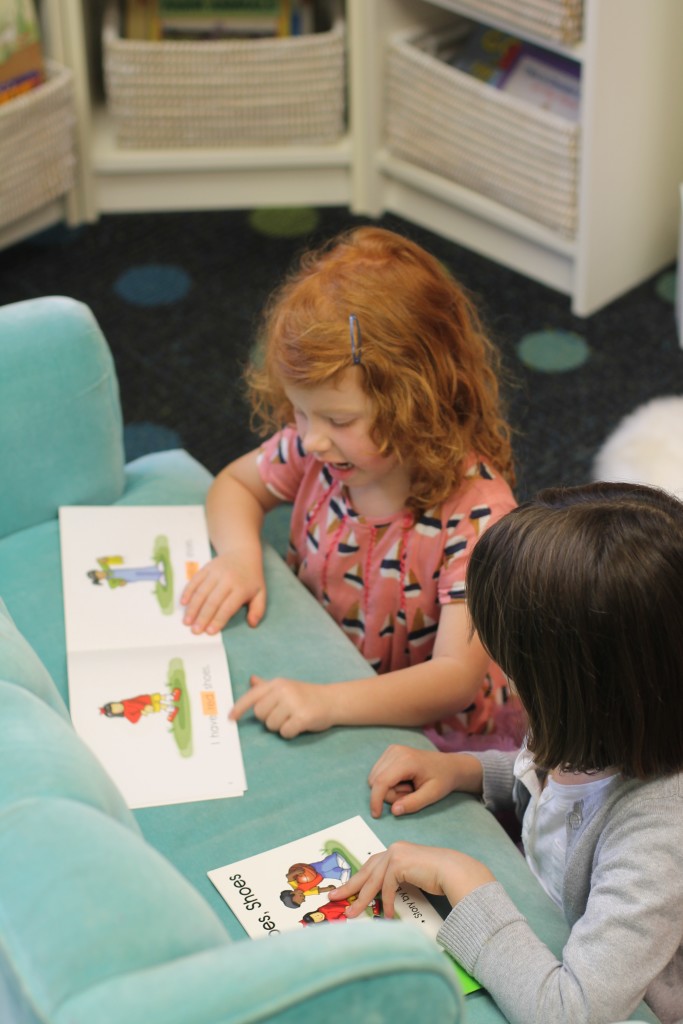
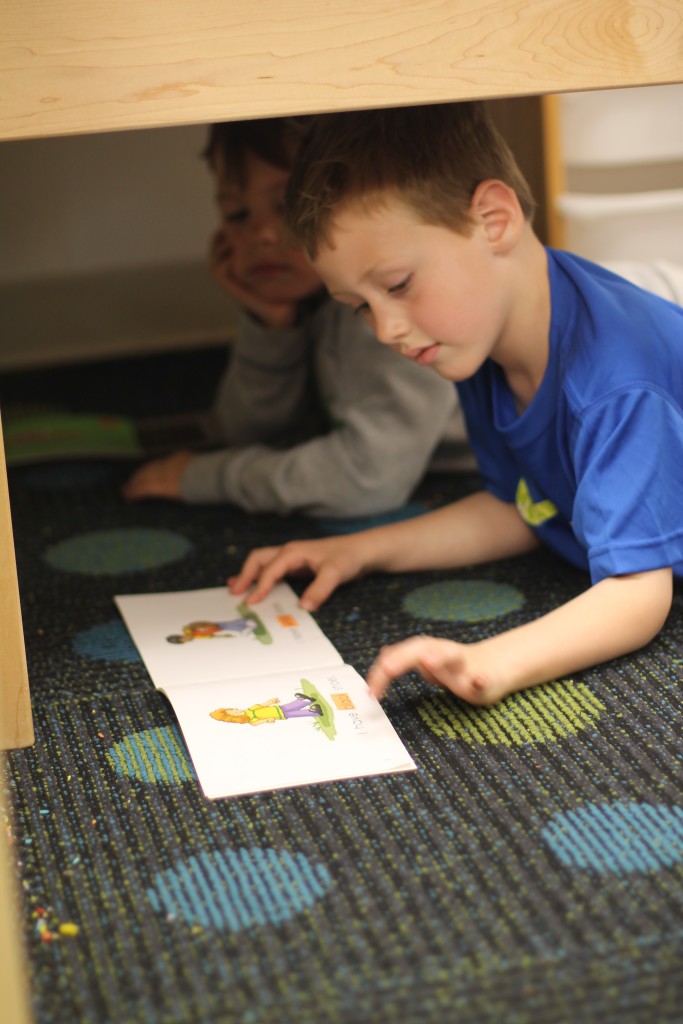
We began our Mo Willems Study for the month of April. We started with The Pigeon Finds a Hot Dog. Mo Willems uses interesting techniques in his illustrations that many artists don’t use. We focused on his use of speech bubbles and the text size. Tiny words for a small whisper voice and HUGE words for a character that is YELLING! The students drew their own Mo Willems Pigeon and added a speech bubble with their own text. We can’t wait for our next Mo Willems book!
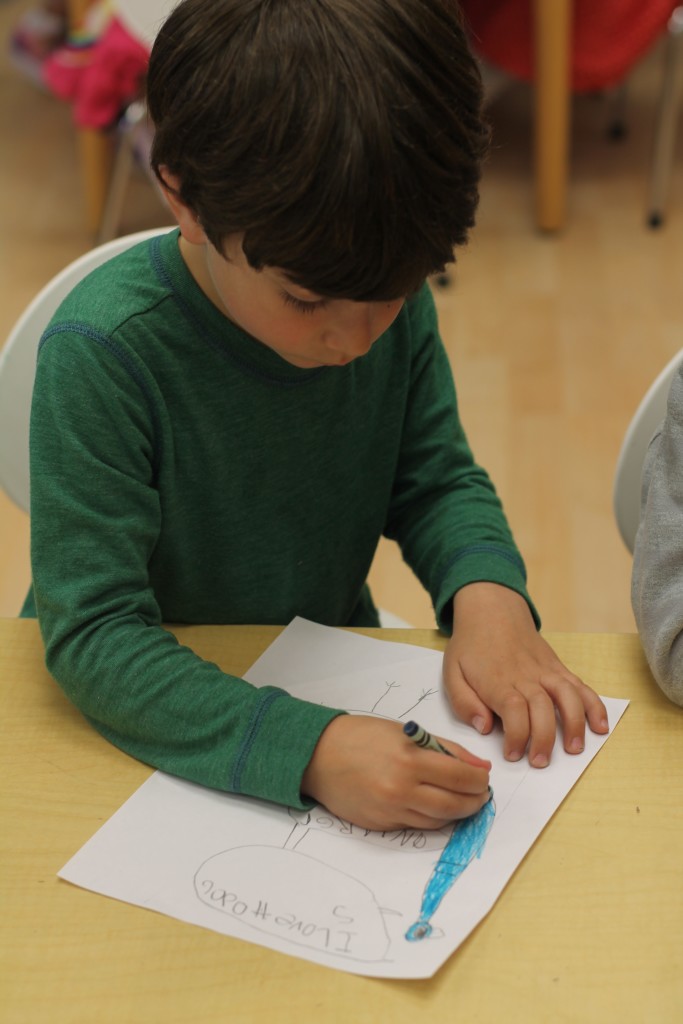
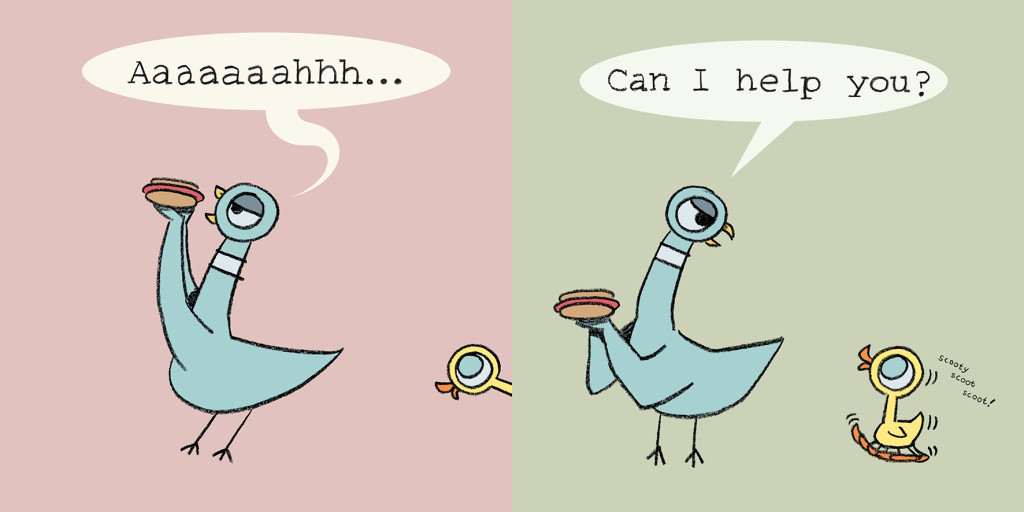
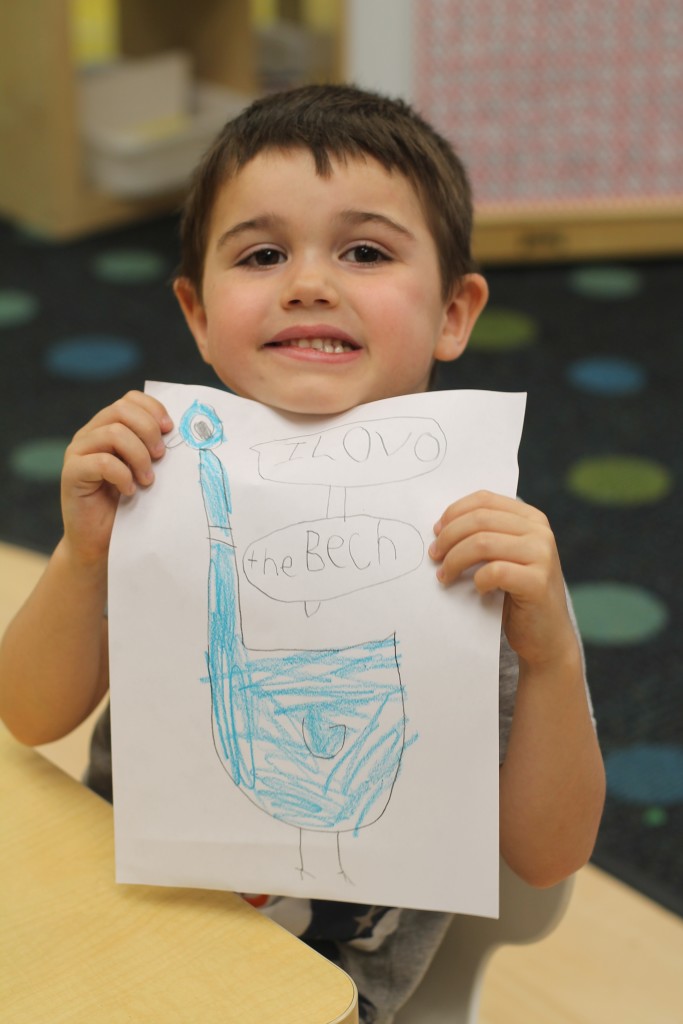
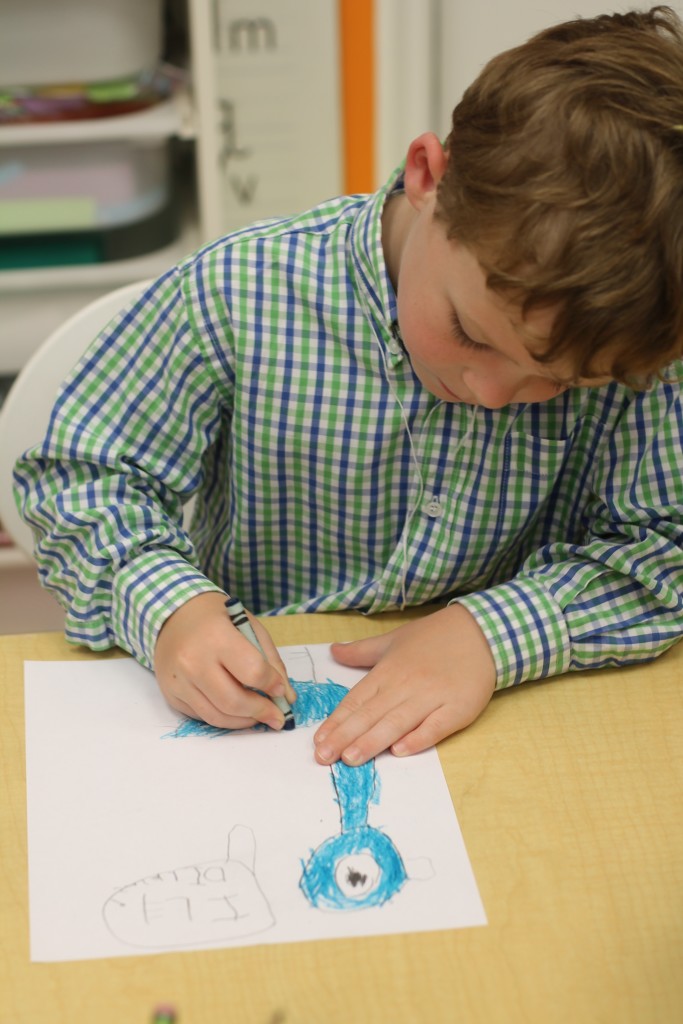
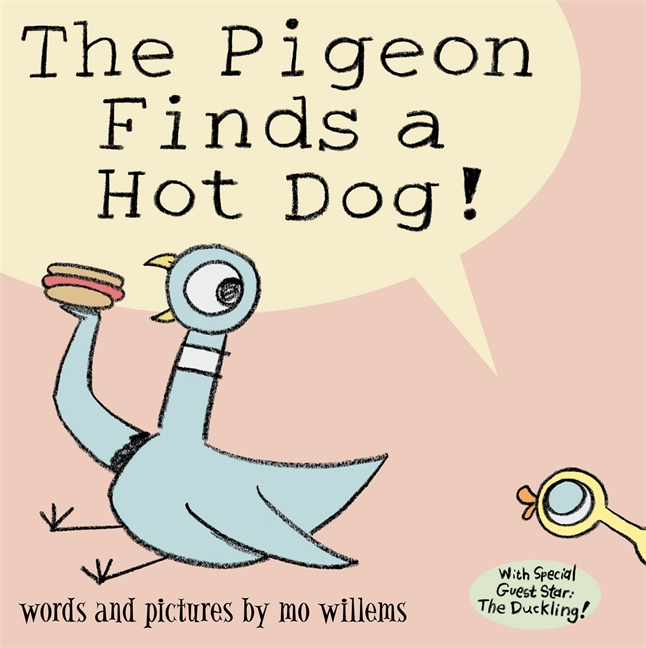
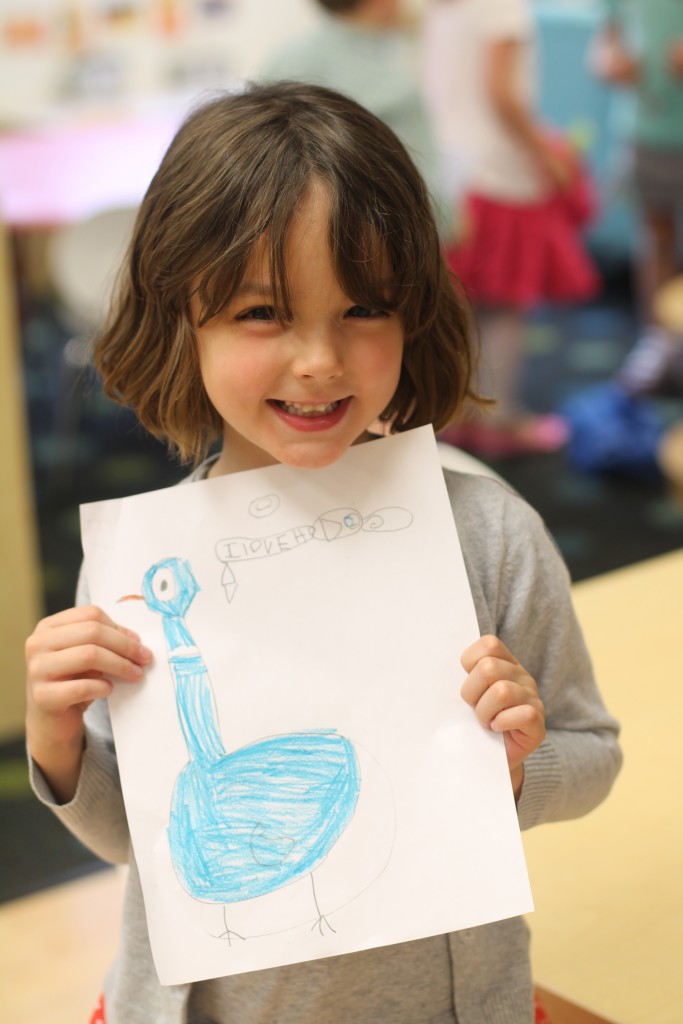
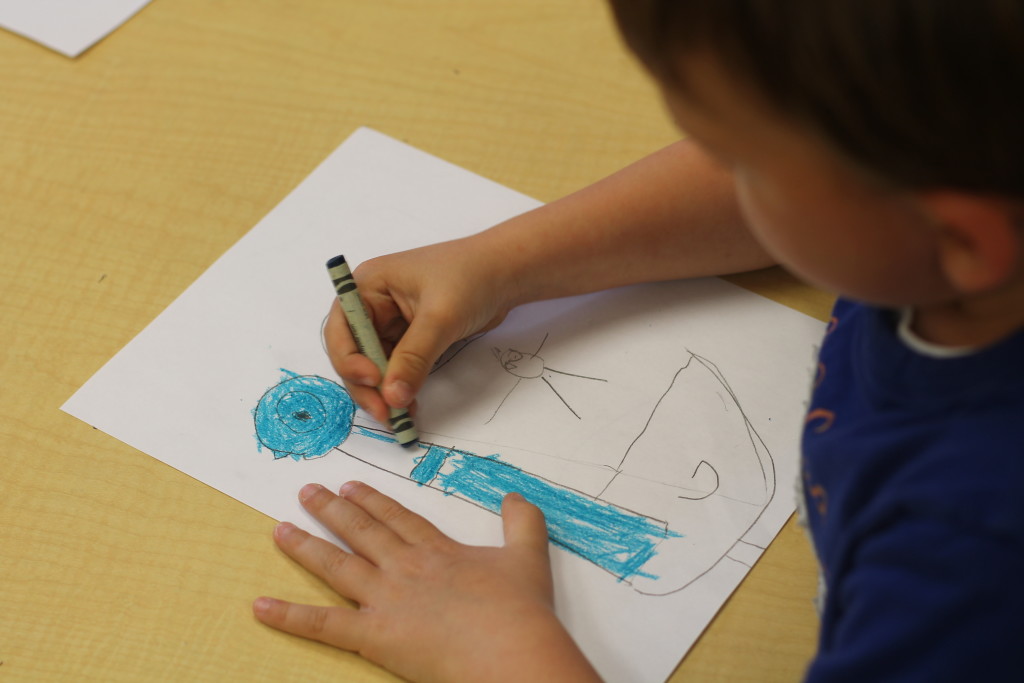
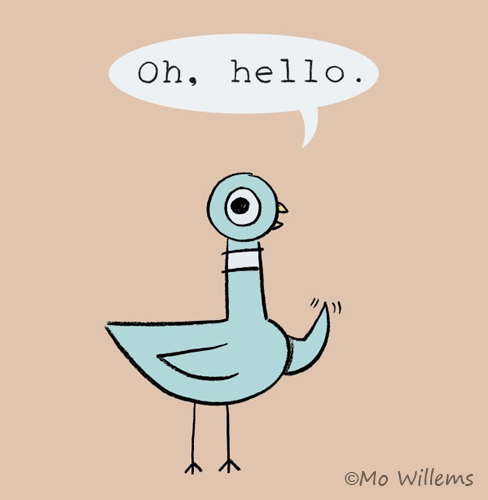
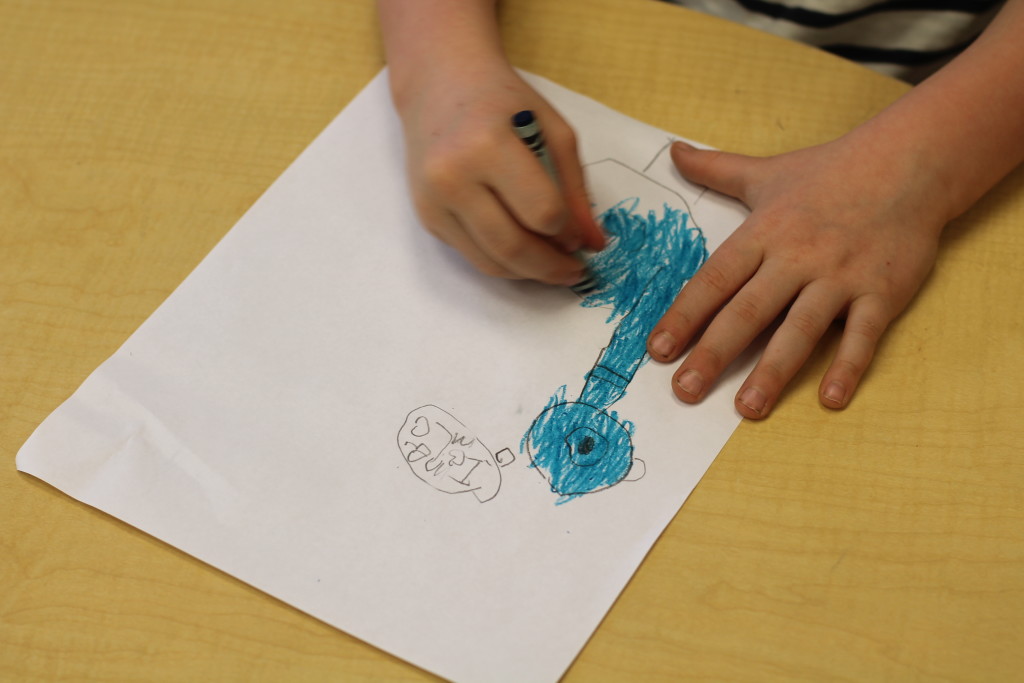
What sound does the letter s make? What sound does the letter h make? Did you know it makes a whole new sound when they buddy up together in a word? We learned about our first digraph in K Prep today…sh. We read the book, Shark in the Park, and identified all the words that started with sh. We created the list of words from the book and came up with many more on our own. We also practiced writing the digraph independently and together in our class book. After group was complete, we worked independently to identify which pictures began with sh and which did not. The students picked up so quickly on this there will be more digraph work in our future for sure! Way to go K Prep!
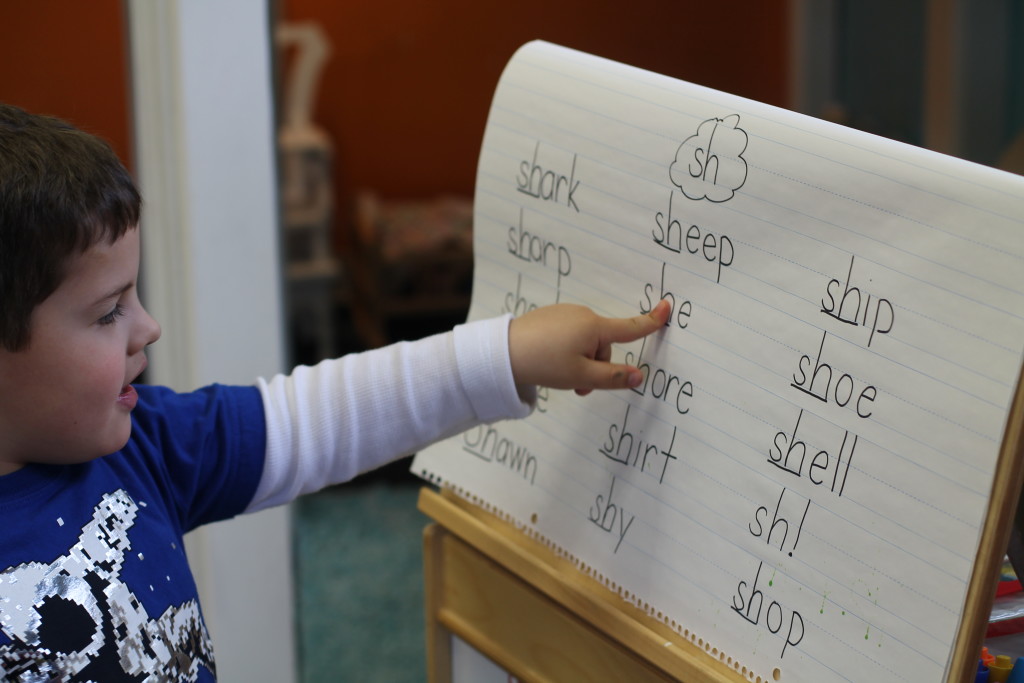
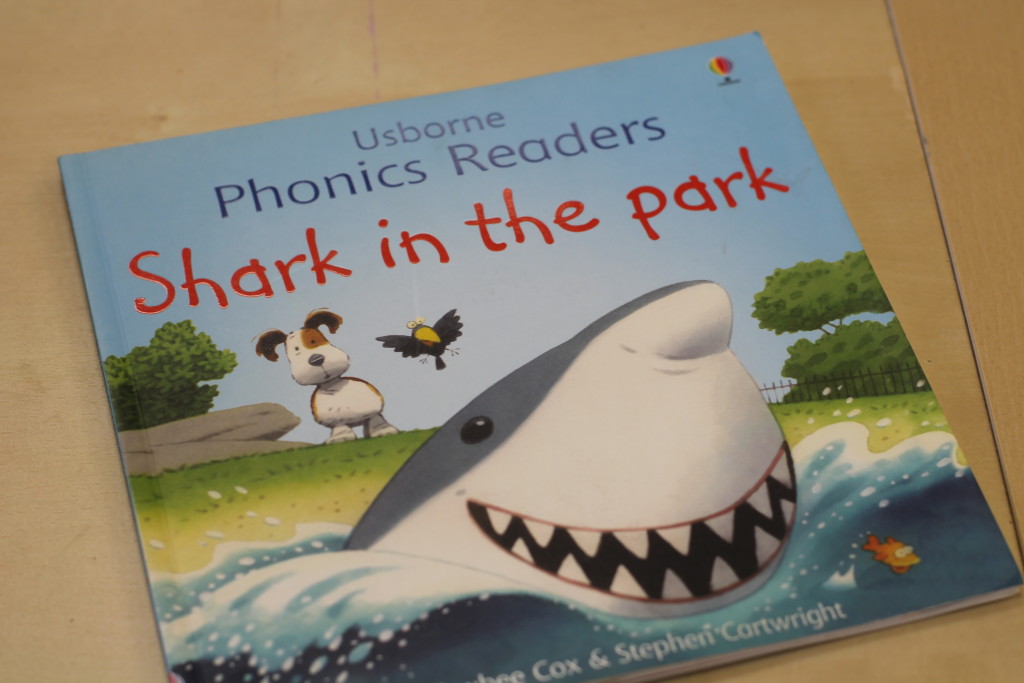
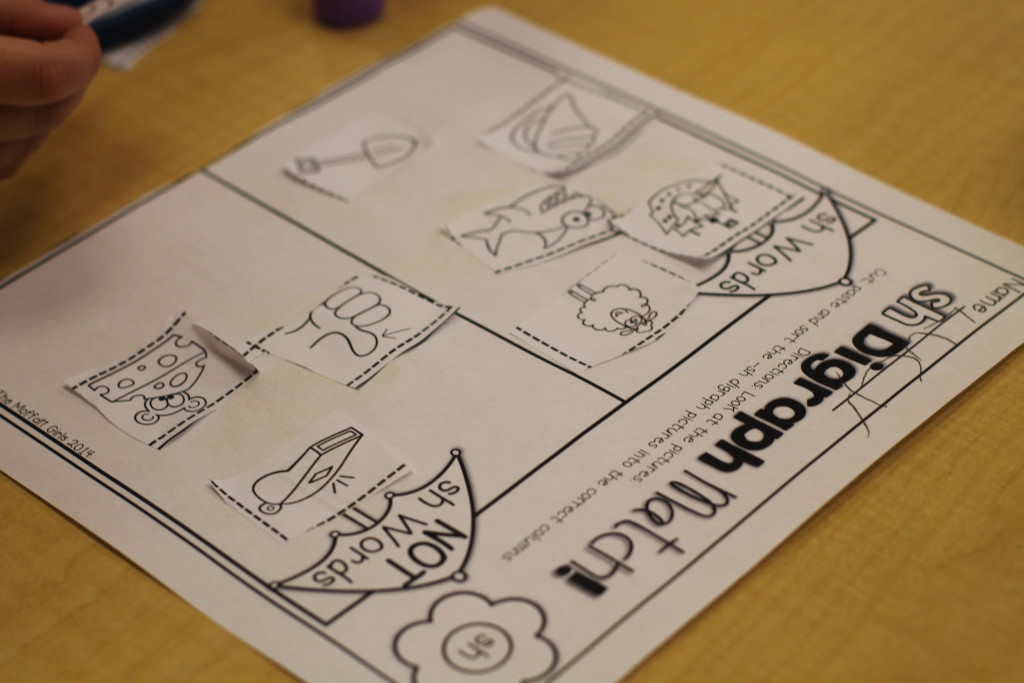
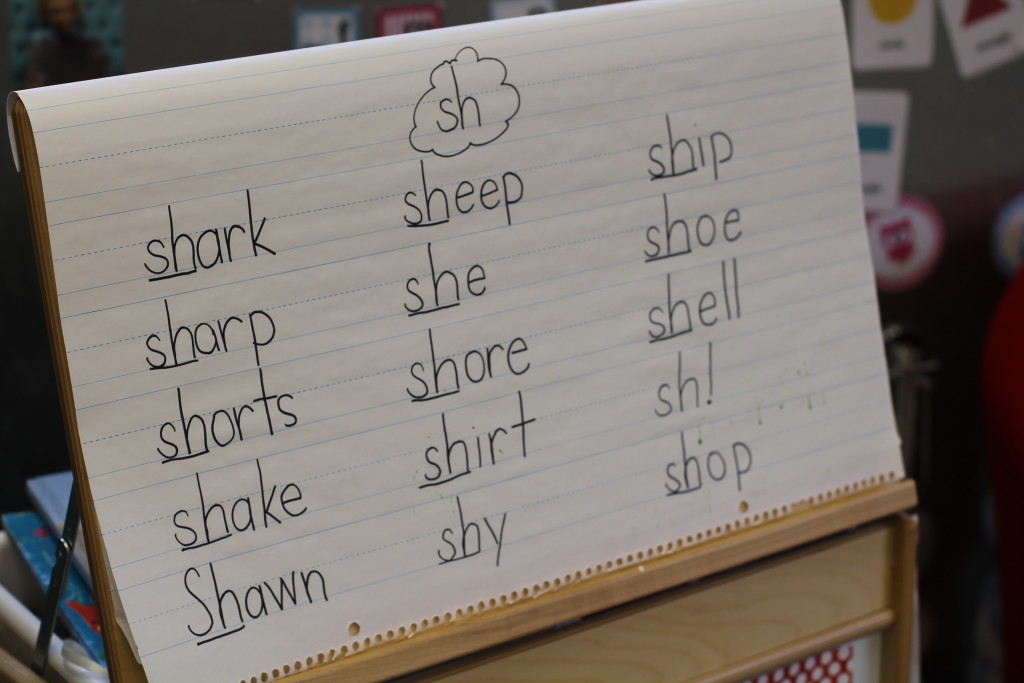
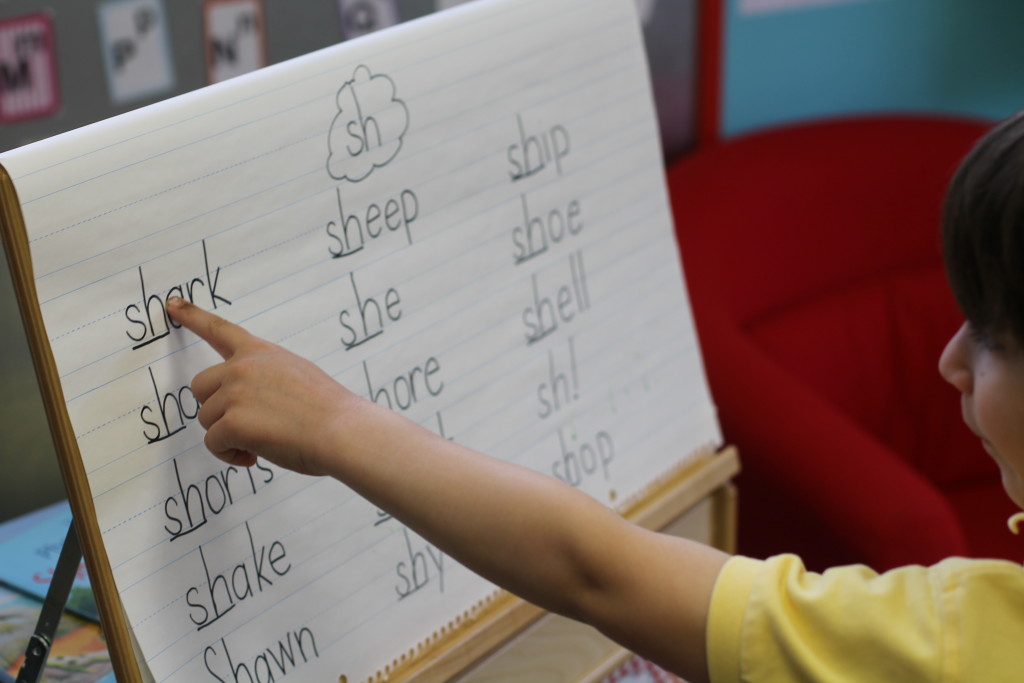
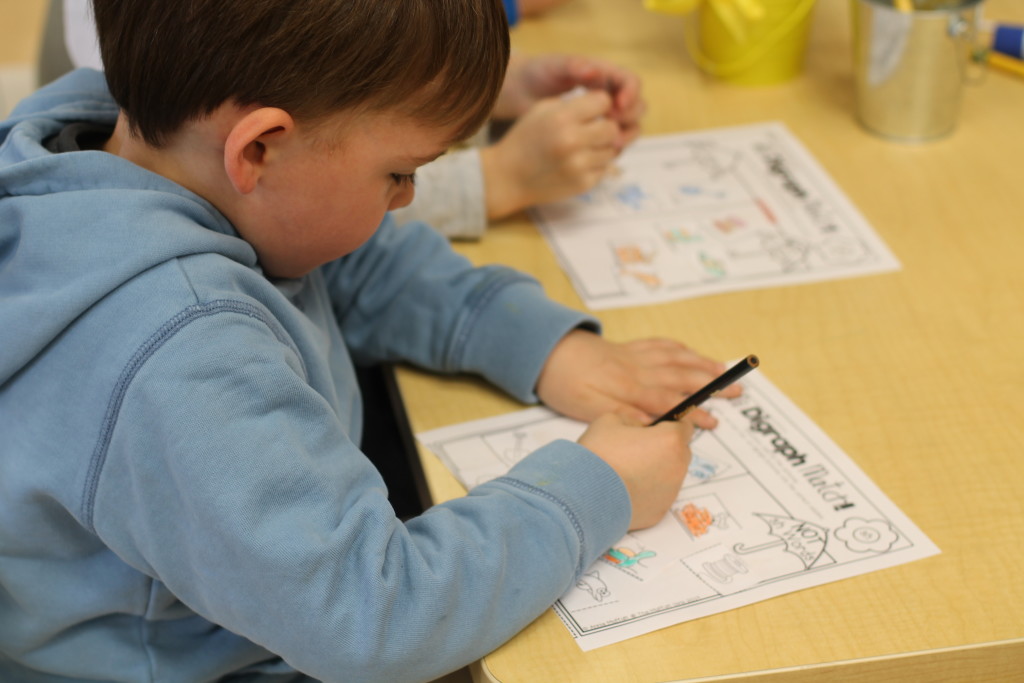
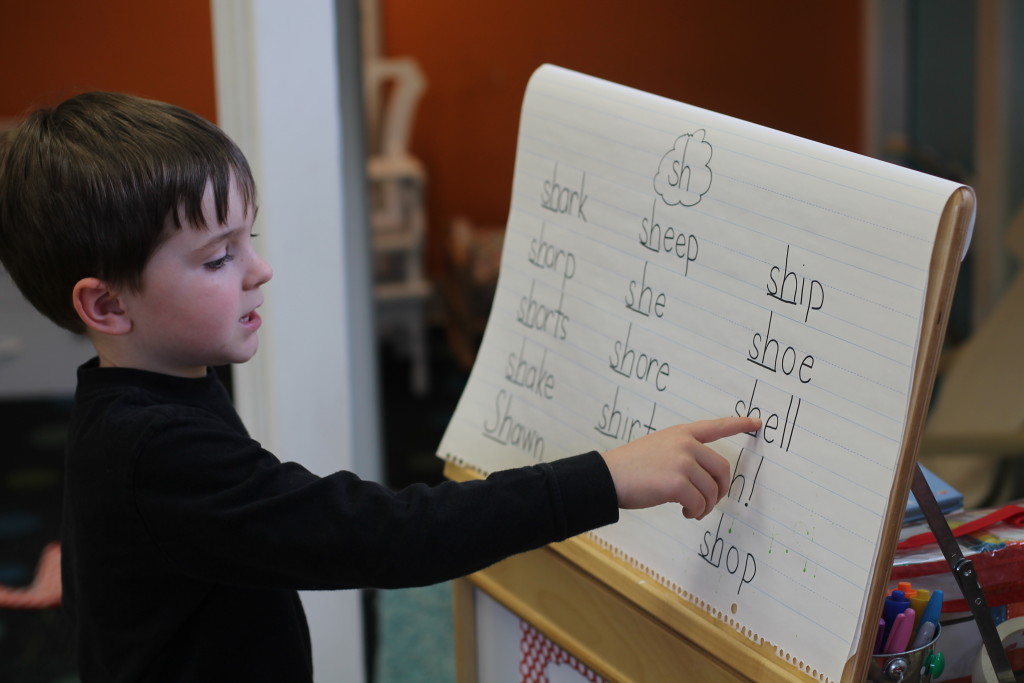
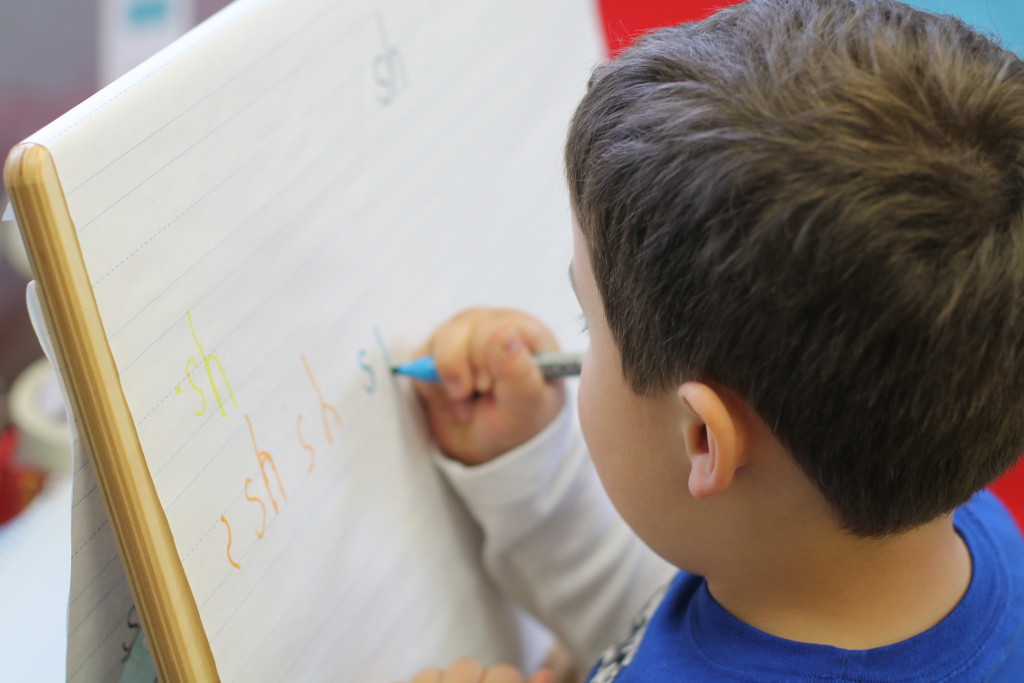
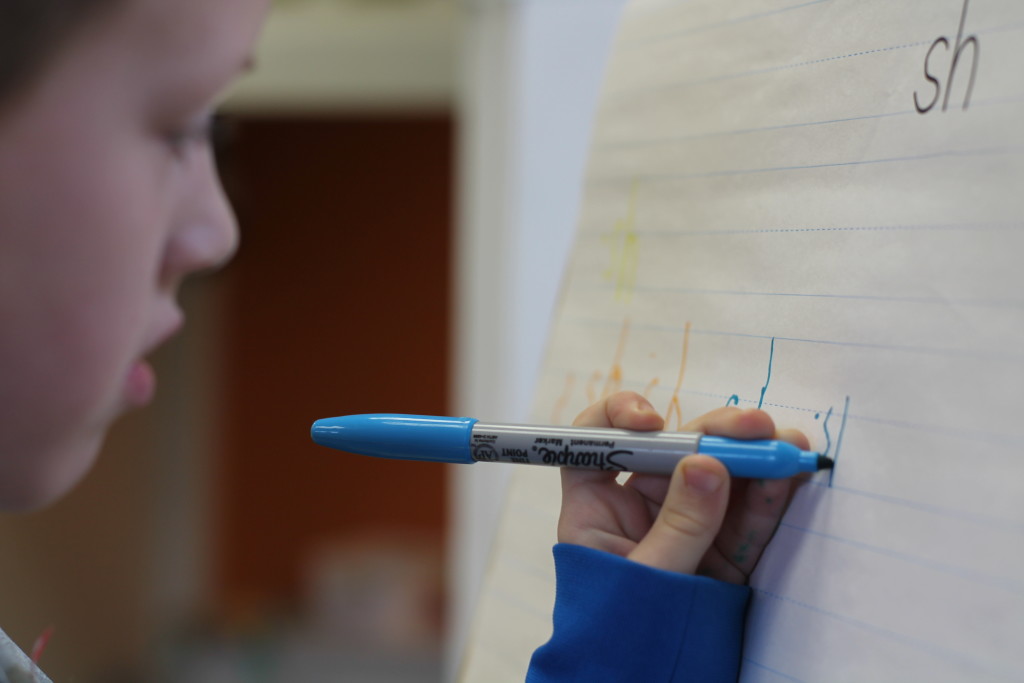
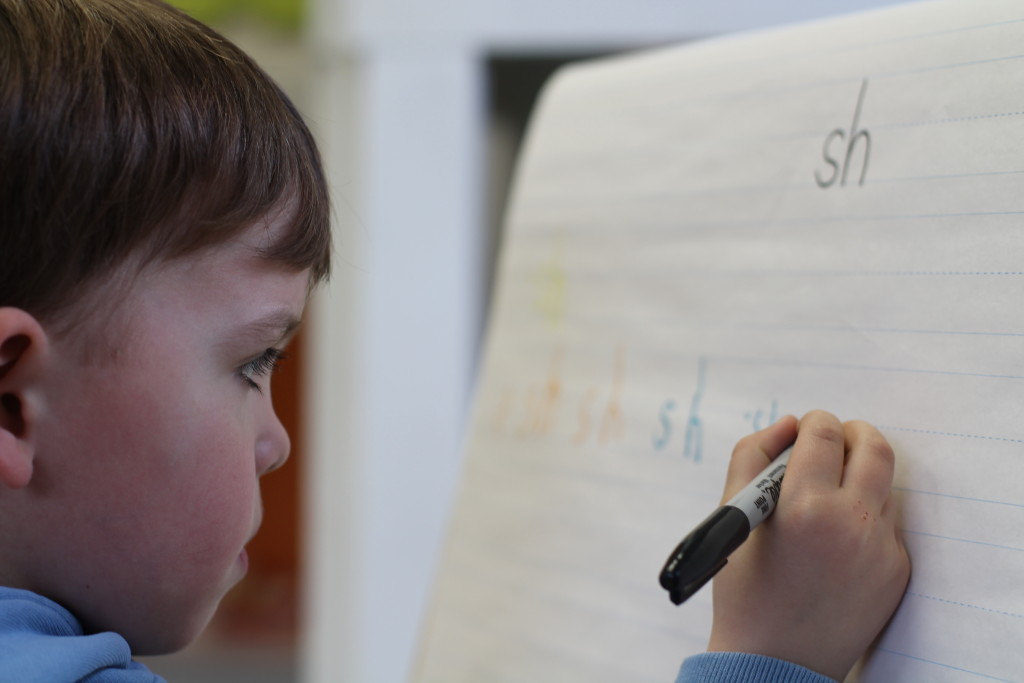
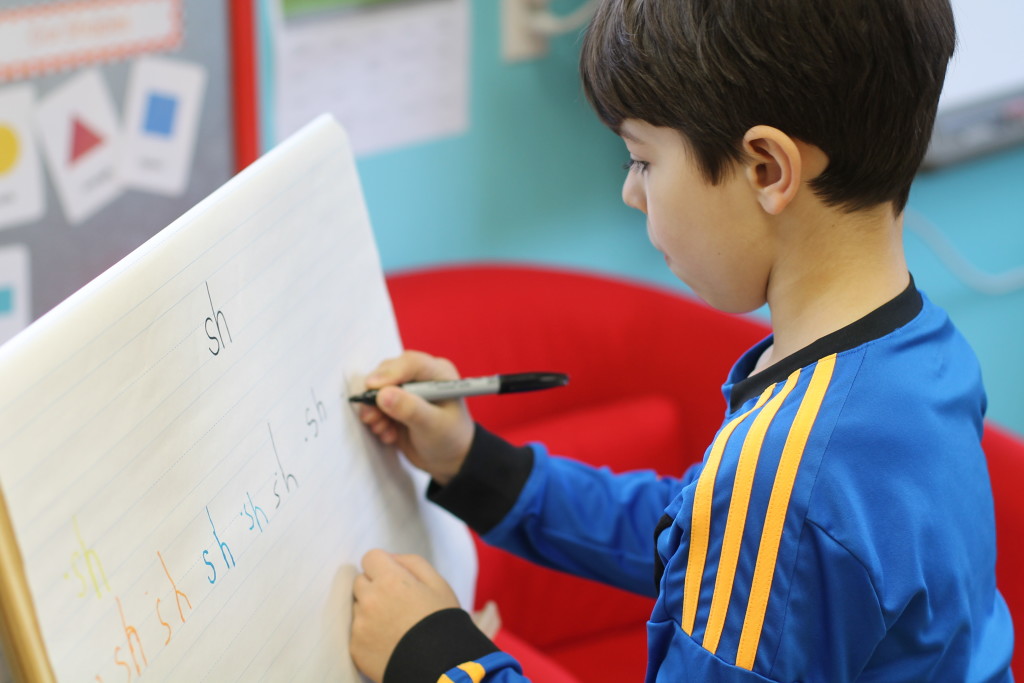
Creative Tots has specialized in the private education of both toddlers and preschool age children for over 15 years. We began in the heart of Madeira and now also have a new Mason location. We are specifically designed to focus on early childhood development for children ages 18 months to 5 years.

Click below to learn more about our program offerings:
